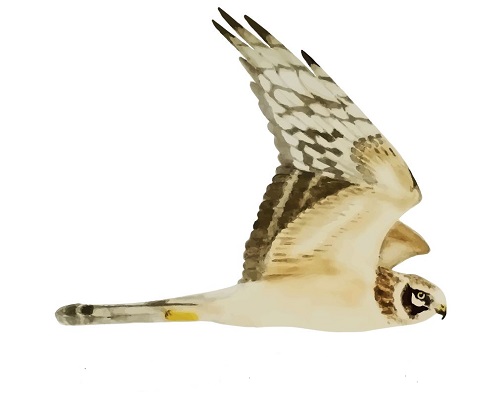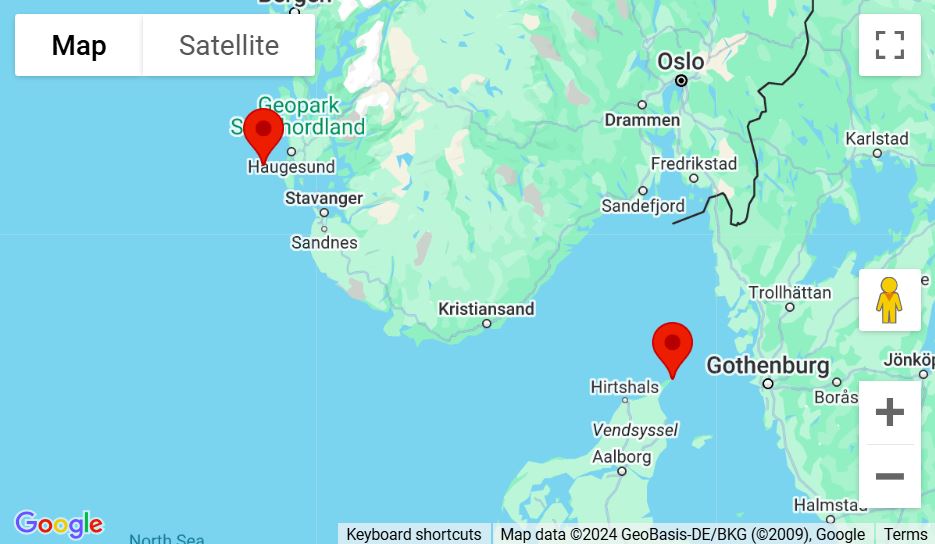Her på Skagen Fuglestations blog bringes korte nyheder i dagbogsformat om hændelser på fuglestationen.
Sooty Shearwater day!!!!
af Emma Fabre
Last night, Thomas and I went night catching. Many birds saw us in the moonlight and flew away. At the end we successfully caught a Dunlin (Almindelig Ryle).
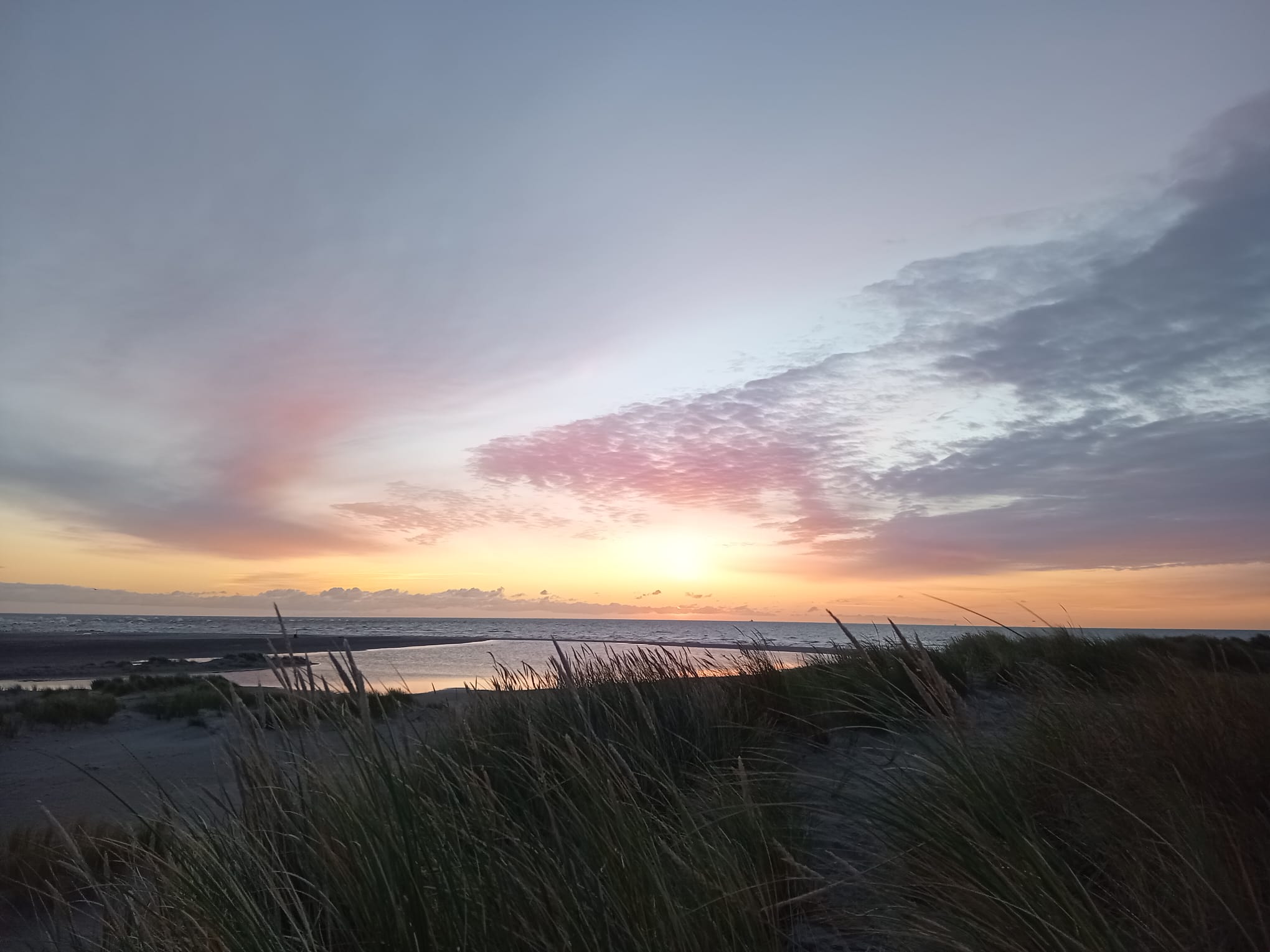
Sunrise at World's End III
Today was a great day for the migrating seabirds! The south wind brought many interesting species. We started with a small auk species. Then, a Sooty Shearwater (Sodfarvet Skråpe) appeared, then an other, and an other… Throughout the day we recorded 41 Sooty Shearwater (Sodfarvet Skråpe)! Additional 4 individuals was seen by others bringing the total up on amazing 45 birds! This is the third highest record for Skagen. The first was November 19, 1978, with 59 birds and the second was October 10, 1997, with 52 birds. Among the Sooty Shearwater (Sodfarvet Skråpe), one Cory's/Scopolis Shearwater (Kuhl's Skråpe) flew far away. There was also a nice migration for the Kittiwakes (Ride).
We also had nice passerines, 8 Horned Larks (Bjerglærke) roosting on the beach and 1 Lapland Bunting (Lapværling) flying into the dunes.
In the afternoon, Ragnar and Thomas continued the counting, joined by Rosa after the ringing. They saw other nice seabirds like a Little Auk (Søkonge), a Great Northern Diver (Islom) and a Pomarine Skua (Mellemkjove).
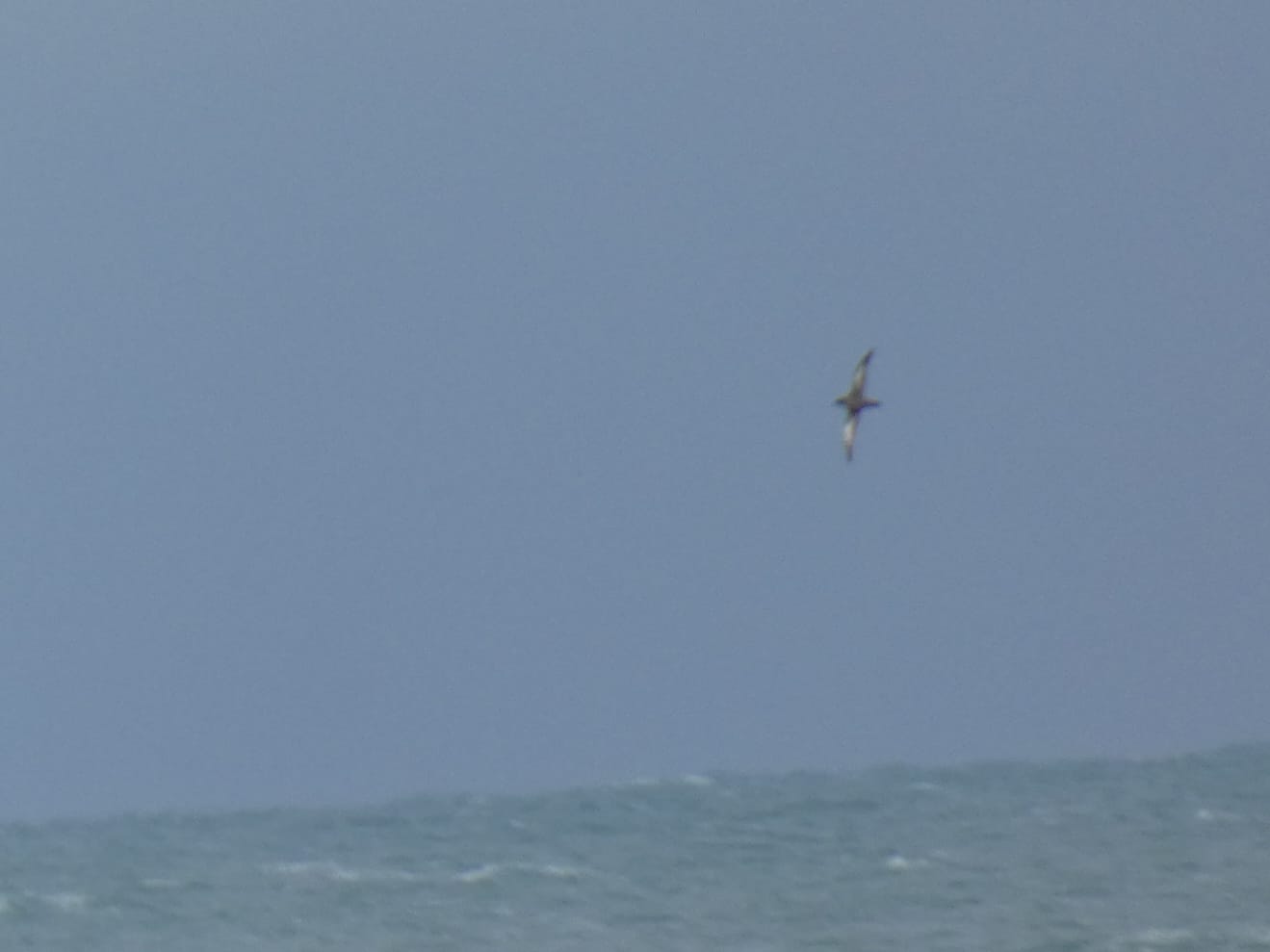
Sooty Shearwater (Sodfarvet Skråpe)
For the ringers, the first hours were nice, before they had to close the nets because of the wind. They had a total of 32 birds with 6 Blue Tit (Blåmejse), 2 Blackbirds (Solsort) and one Song Thrush (Sangdrossel).
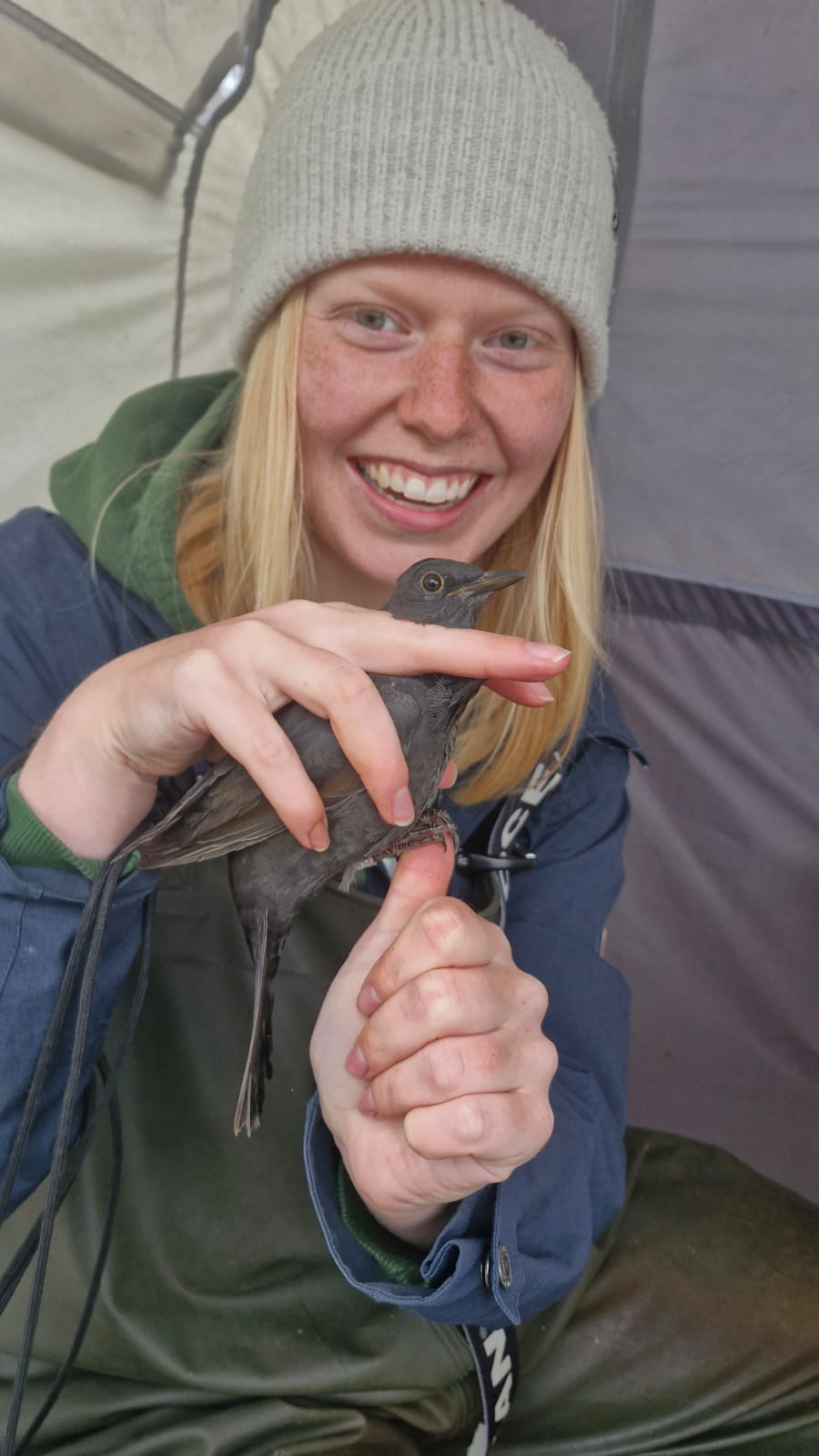 Mara ringing a Blackbird (Solsort)
Mara ringing a Blackbird (Solsort)
Highlights of the observation:
Sooty Shearwater / Sodfarvet Skråpe - 45 migr. NV - Highest count in Skagen since the 90's and the third highest ever!
Little Auk / Søkonge - 1 migr. SE
Great Northern Diver / Islom - 1 migr. SE
Cory's/Scopolis Shearwater / Kuhl's Skråpe - 1 migr. NV - 20th record for Skagen
Lapland Bunting / Lapværling - 1 roosting
Pomarine Skua / Mellemkjove - 1 roosting/Migr. SE
Horned Lark / Bjerglærke - 8 roosting
Firecrest / Rødtoppet Fuglekonge - 1 roosting
Ringing (Kabeltromlen):
Sangdrossel - 1
Solsort - 2
Musvit - 2
Gærdesmutte - 8
Rødhals - 4
Jernspurv - 1
Munk - 2
Blåmejse - 6
Gransanger - 4
Fuglekonge - 1
Dompap, Lille (europaea) - 1
Total:32
Today’s observations on Dofbasen from observers in the area
People at the station: Ragnar Smith, Rosa Hicks, Thomas, Mara Glane, Emma Fabre, Simon Sigaard Christiansen, Mette Møller Christensen, Lisa Vergin, Kevin and Nina Kuhlmann Clausen + kids
Autumn Migration In full Swing
A change in the wind direction led to the wind coming from the southwest, a noticeable change to the recent days. Today, the wind felt noticeably colder, but with sunny intervals it was rather warm when you tucked yourself away. The change in temperature and cold weather sinking through Sweden and Norway resulted in a very nice movement of birds noted across the Skagen area.
Today started with Mara, our intern Carl, Simon, and me going to Kabeltromlen. We managed to open just over half of the nets due to the weather and were very vigilant with the gusts. Mara’s hands froze this morning with the wind. However, it was all good and a decent number of birds were caught and processed. The highlights were the first ‘northern’ Bullfinch [Stor Dompap] of the season, a large, beasty male who made the ‘southern’ Bullfinch [Lille Dompap] look quite small in comparison. There was also a good movement of Chiffchaffs [Gransanger], Goldcrest [Fuglekonge] and Robins [Rødhals] with numbers of each seen and caught throughout the morning. The session was complete just after midday and was timed by Ragnar arriving and saying there was a Great Grey Shrike on the other side of the track, which unfortunately we did not see when we were leaving the site.
Meanwhile, Ragnar, Rosa, Mara, and Emma went to migration counts. Many Gannets [Sule] were feeding just offshore with over 4000 birds seen this morning which sounded incredible. The videos of the birds diving in front of the sunrise looked stunning and we hope they attract the Brown Booby [Brun sule]. Other highlights included Black Guillemot [Tystie], a passage of birds arriving in off the sea including Swallow [Landsvale] which flew right over the observers heads; 2 Mute Swans [Knopsvane] which are an unusual species to see from the tip; an Arctic Skua [Almindelig Kjove]; a juvenile and adult Common Terns [Fjordterne], the latter age a bit of a weird one for this time of year; a passage of passerines heading in at the tip throughout the morning; the first big movement of waterfowl with geese flocks coming from the south; and 2 late Arctic Tern [Havterne].
On arrival to the observatory, we said goodbye to Carl and wish him well with his future studies and birding adventures. Lunch was had, the weather deteriorated, and so everyone completed their personal tasks. This included momentarily saying goodbye to Ragnar who went off to meet up with friends for the day; Rosa found out one of the Great Black Backed Gulls we resighted recently had been resighted near her house a couple of years ago at the nearby Lidl, now on the point before having an interview and went for a walk where she saw flocks of up to 300 Pink footed Geese migrating south [Kortnæbbet Gås]; Mara warmed up from earlier and completed some university work before doing some data inputting with myself; and Emma took it nice and easy after here recent travels to Estonia for migration counts out there.
The team completed their relevant ‘office’ tasks and had a relaxed afternoon ready for nightcatching later.
Highlights from the observatory:
- An impressive 4000 Gannets [Sule] off the point
- A continuous arrival of migrant passerines and waterfowl this morning.
- A flock of 8 Bearded reedlings [Skægmejse].
- A Blackcap [Munk] ringed in Autumn 2022 was caught and processed in September 2024 in Surrey, near London, England.
Ringing totals
Ringing (Kabeltromlen)
|
Goldcrest |
Fuglekonge |
8 |
|
Wren |
Gærdesmutte |
2 |
|
Chiffchaff |
Gransanger |
9 |
|
Blackcap |
Munk |
3 |
|
Robin |
Rødhals |
11 |
|
Lesser Redpoll |
Gråsisken, Lille (ssp. cabaret) |
1 |
|
Siskin |
Grønsiskin |
1 |
|
Bullfinch |
Dompap |
1 |
|
‘Northern’ Bullfinch |
Stor Dompap |
1 |
|
‘Southern’ Bullfinch |
Lille Dompap |
2 |
|
Blackbird |
Solsort |
1 |
Total: 40
Today’s observations on Dofbasen from observers in the area
People: Michael Ancher, Thomas Weston, Ragnar Smith, Rosa Hicks, Mara Glane, Rasmus Matthiesen, Emma Fabré, Carl Simonsson, Natacha Gaedecke, Simon Sigaard Christiansen.
What's better than 1 yellow browed warbler?
Hi!
As we are now well into autumn, once again we can start the blog with some night catching success - as Thomas, Mara and I went out to Grenen last night. We caught a dunlin and jacksnipe, with no sign of any of the larks and bunting species seen during the morning observations, unfortunately.
The morning then rolled around and we headed out to Kabeltromlen and Worlds End Three. The ringing brought Wrens (Gærdesmutte), Blackcaps (Munk), Robins (Rødhals), and Chiffchaffs (Gransanger). Joined by Carl again, between us we processed 36 birds, with 24 newly ringed today.
Meanwhile the guys out at Worlds End Three were being treated to some great birds, starting strong with the rear end of a White-Billed Diver (Hvidnæbbet Lom). This was later followed by another which flew right over their heads as well as a Gret Northern Diver (Islom). Alongside Red and Black Throated Divers made for a 4 diver species session. They also had a Yellow Legged Gull (Middelhavs-sølvmåge), Lapland Bunting (Lapværling), Slavonian Grebe (Nordisk Lappedykker), Arctic Skua (Almindelig Kjove), a Fulmar (Mallemuk), a handful of Shore Larks (Bjerglærke), 7x Caspian Gulls (Kaspisk Måge), 3x Little Gulls (Dværmåge), and the first 2x Water Pipits (Bjergpiber) of the year. If that wasn’t good enough, they heard a Yellow Browed Warbler (Hvidbrynet Løvsanger) and saw a distant Minke Whale (Vågehval).

White-Billed Diver
The group then said goodbye to Rasmus – thank you for all your help if you’re reading this! After, we went on a bike ride, and only went and saw ANOTHER Yellow Browed Warbler (Hvidbrynet Løvsanger)!! While it is likely the same as yesterday, two in one day is still an incredible record for Skagen.
Bringing more good news to the day, we had a reply from the Ringing Centre about our Norweigan recaptured Blue Tit (Blåmejse), caught on October 8th. It was rung 377km away on Utsira, an island in West Norway…. Exactly a year before it was recaptured! Very cool!
Recaptured Blue Tit / Blåmejse / Blåmeis, celebrating its one year ringing birthday with us at Kabeltromlen.
Just as we thought the day couldn’t get any better, we have been treated to a spectacular show from the Aurora Borealis (Nordlys)!
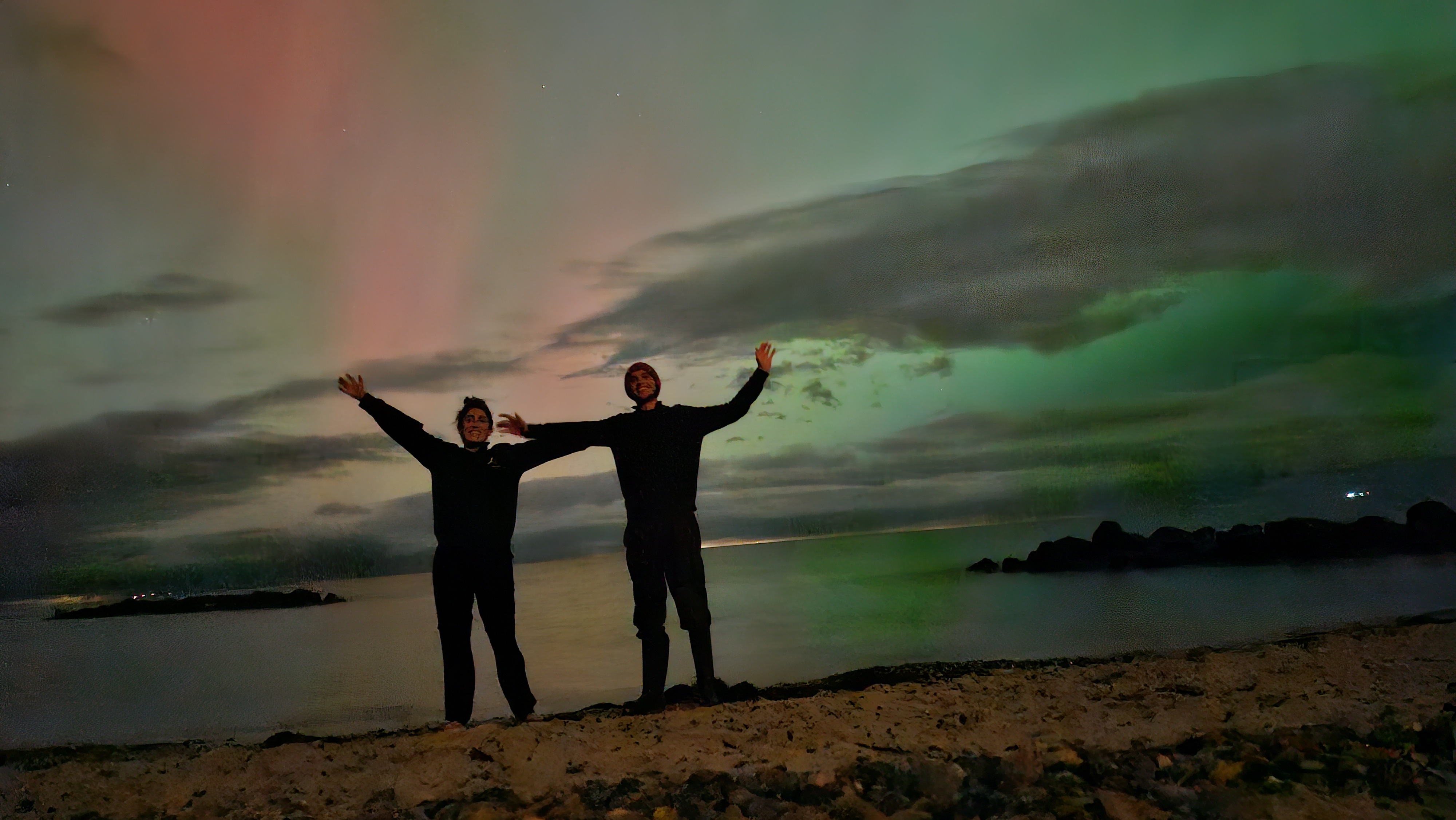
Good night!
Ringing (Kabeltromlen)
Gærdesmutte - 7
Munk – 5
Rødhals - 4
Blåmejse – 3
Gransanger – 2
Fuglekonge - 2
Rørspurv -1
Total = 24
Ringing (Jens Sø)
Gransanger – 4
Gærdesmutte – 2
Lille Grasiskin - 2
Rødhals – 1
Munk – 1
Fuglekonge – 1
Musvit – 1
Blåmejse – 1
Total = 14
Highlights from the Observations
- White-Billed Diver (Hvidnæbbet Lom)
- Great Northern Diver (Islom)
- Yellow Legged Gull (Middelhavs-sølvmåge)
- Lapland Bunting (Lapværling)
- Slavonian Grebe (Nordisk Lappedykker)
- Yellow Browed Warbler (Hvidbrynet Løvsanger)
- 7x Caspian Gull (Kaspisk Måge)
- 3x Little Gull (Dværmåge)
- 2x Water Pipit (Bjergpiber)
Today’s observations on Dofbasen from observers in the area
People at the Station: Thomas Weston, Ragnar Smith, Rosa Hicks, Mara Glane, Rasmus Matthiesen, Simon Sigaard Christiansen, Michael Ancher, Carl Simonsson, Natacha Gaedecke.
Hvidbrynet løvsanger!
En sløv dag med en rigtig fin afslutning!
Ragnar, Thomas og jeg kørte igen i morges ud til verdens ende 3 for at tælle træk. Desværre var sigtbarheden forfærdelig grundet tåge, så vi brugte en del af observationsperioden på at kratluske ved Grenensøen og strandengene hvor vi så rigtig mange rørspurve og gulspurve og en flok almindelige ryler, sandløbere og store præstekraver. Vi sluttede obsen 1 time tidligere end normalt, kørte hjem, og så lavede Ragnar hans legendariske morgenmad. Toastbrød ristet i smør, med spejlæg på den ene side og smeltet ost på den anden side. Mega lækkert. Ude ved kabeltromlen havde ringmærkerne Mara, Rosa og vores praktikant Carl en stille og rolig morgen, med fede fugle som dompap og vindrossel.
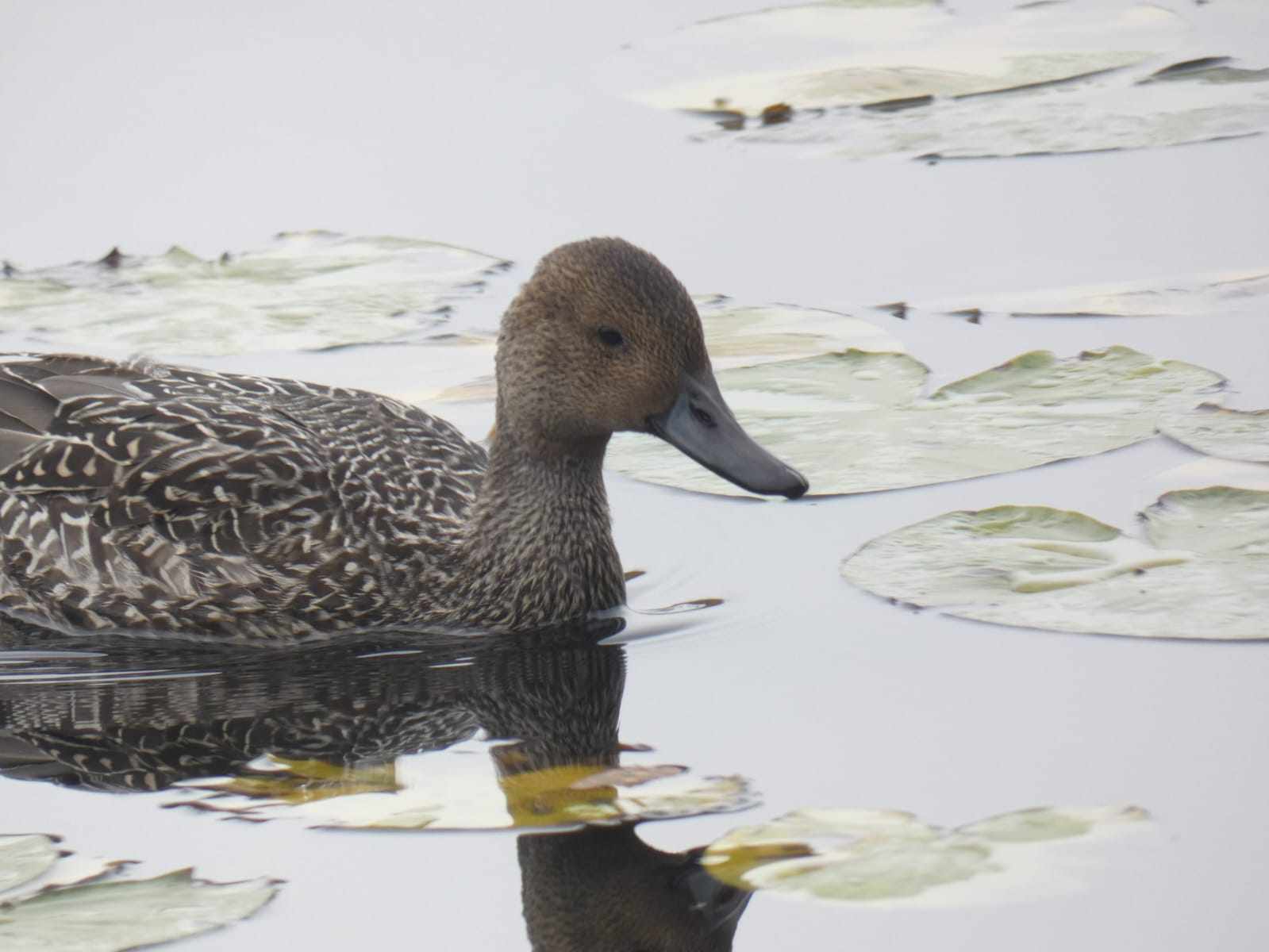
Efter et hurtigt bad var jeg klar til at kratluske med Thomas og Ragnar. Vi besluttede os for at tjekke krattene omkring Jennes sø, hvor vi fandt en cool og meget tillidsfuld spidsand. Ved søen mødte vi Michael Ancher, som viste os rundt ved nettene på sin sidste netrunde. Da vi kørte fra Jennes sø, besluttede vi os for lige at prøve “MobGang” af ved krattet overfor redningsstationen og BINGO! En virkelig smuk hvidbrynet løvsanger tittede frem i busken. Vi nåede at få flere gode billeder af den og hørte den kalde, før den forsvandt lige så hurtigt som den dukkede op. Vi forsøgte derefter at trylle endnu en hvidbrynet løvsanger frem ved Guldmajssøen og ved Skagen Camping, men uden held.
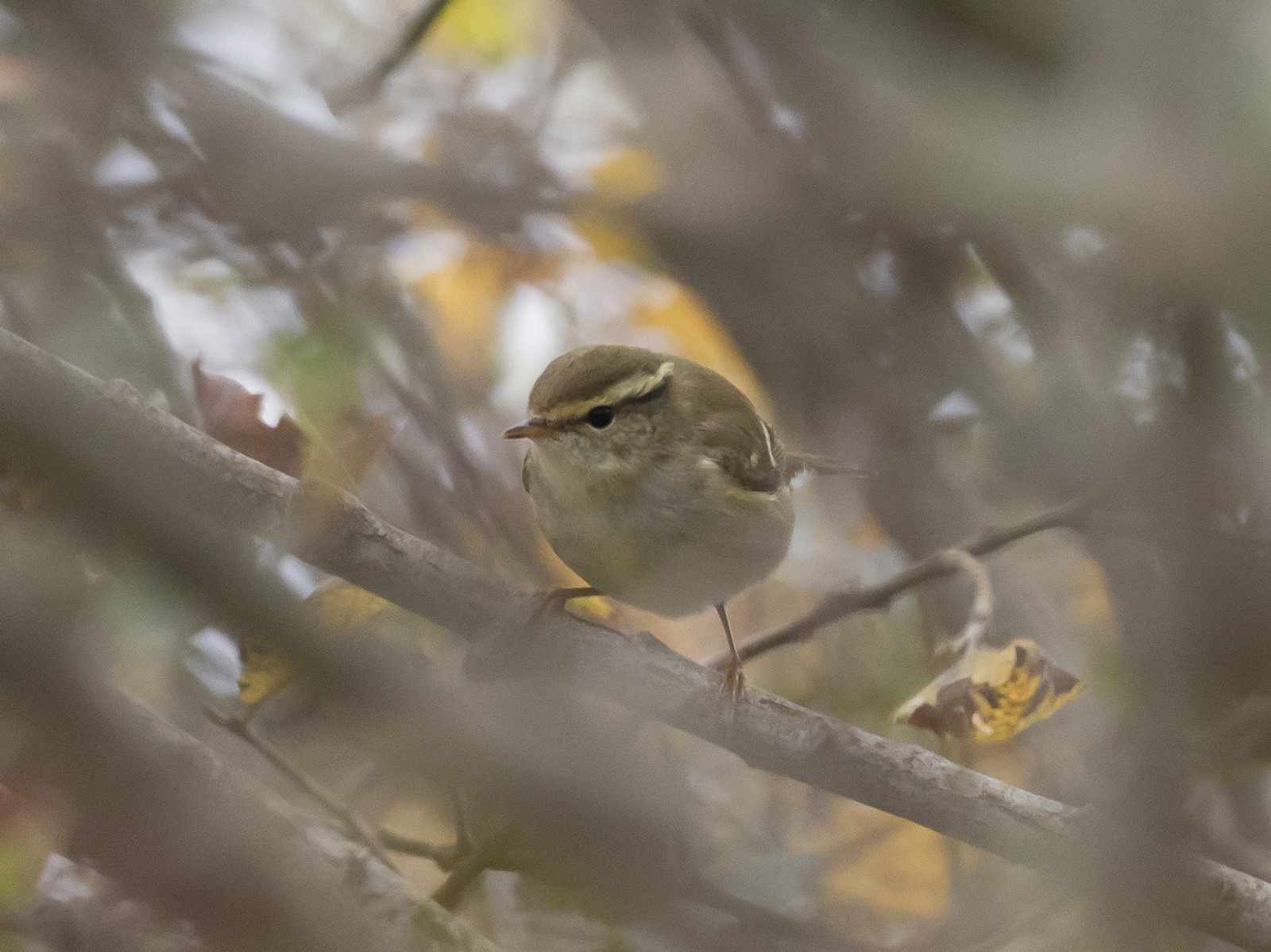
Vi kom hjem til duften af kage på stationen. Mara havde besluttet sig for at bage en banankage som smagte virkelig dejligt! Nu er Rosa i gang med at lave aftensmad, og det dufter også virkelig godt! Imens sidder Ragnar og jeg og kvalitetstjekker vores Dofbasen indtastninger for fejl (som der selvfølgelig ikke er nogen af).
I morgen trækker jeg hjemad, og jeg kan se tilbage på en rigtig fin uge med søde mennesker og fantastiske fugle:) Det har været en fornøjelse at være tilbage på Skagen Fuglestation, nu glæder jeg mig endnu mere til foråret, hvor jeg skal være frivillig fra midt marts til slut juni:)
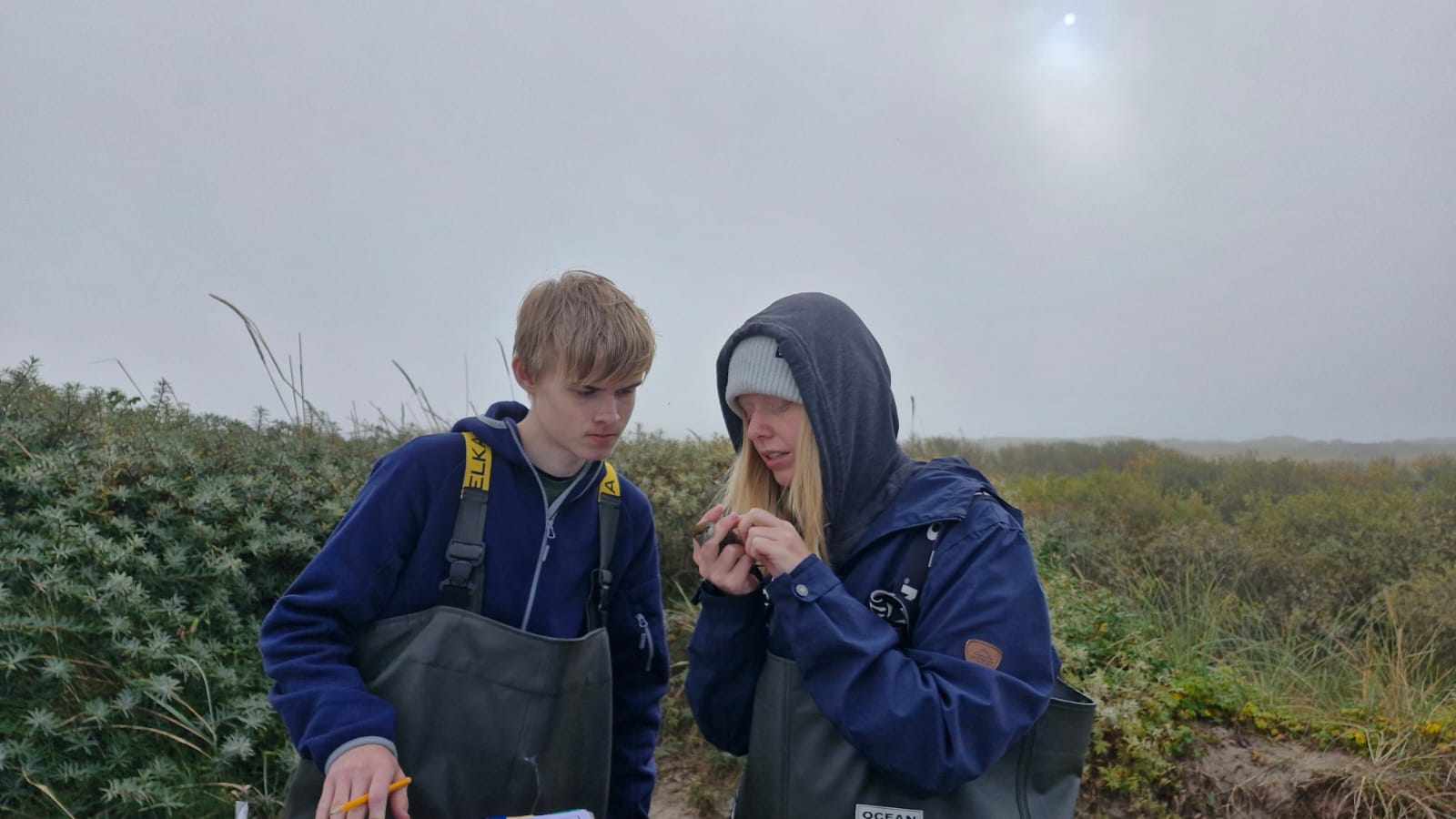
Vi ses derude!
Highlights:
Enkeltbekkasin
HVIDBRYNET LØVSANGER
Ringmærkning fra Kabeltromlen
(Opdateres)
Ringmærkning Jennes sø
(Opdateres)
Today’s observations on Dofbasen from observers in the area
People: Thomas Weston, Ragnar Smith, Mara Glane, Rasmus Matthiesen, Carl, Simon Sigaard Christiansen, Michael Ancher, Seán Walsh
Skagen goes international
Hej!
The sunrise starts later and later and as Rosa and I were cycling out to Kabeltromlen it was still quite dark. After opening the nets sadly there weren't many birds around and we only caught a few in the first rounds. Soon we were visited by Simon guiding a tour with people from the Länsstyrelsen Västra Götaland in Sweden. The next international visit was from Ireland, as Seán came by to visit the station for one day. He is now cooking a nice dinner for us as he spontanously decided to stay the night, by the way. And another visit from a different country was a Blue Tit/Blåmejse that got caught in our nets with a ring from Norway! Looking forward to hear when and where it was ringed.
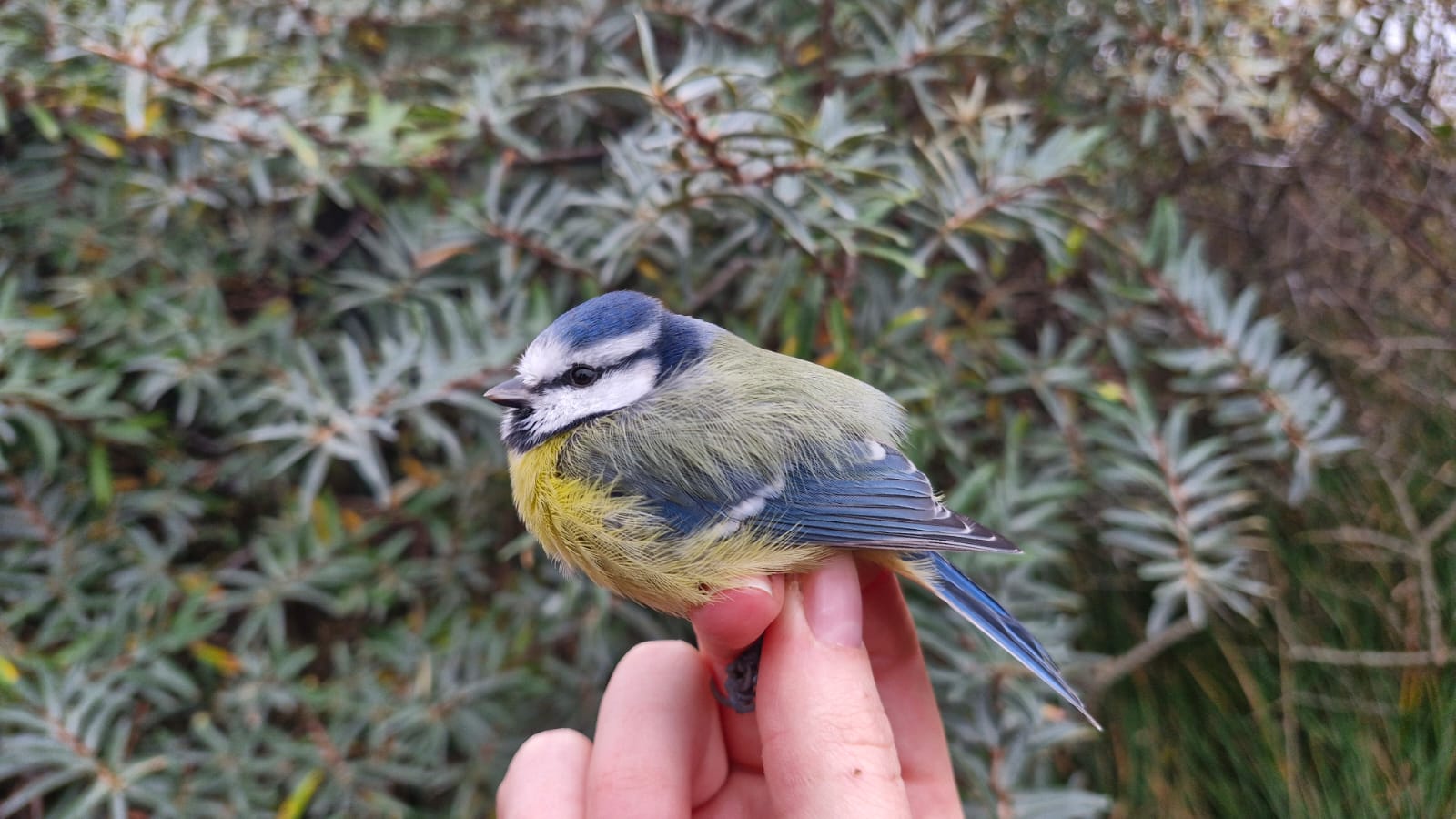
Blue Tit/Blåmejse with a norwegian ring
The tour from sweden also visited Ragnar, Thomas, Rasmus and Carl at the migration count at World's End 3. Just in time to see an Arctic Skua/Almindelig Kjove. The observers also had a nice sight on some Shovelers/Skeand flying over. On their way back they luckily saw and heard a Lapland Bunting/Lapværling.
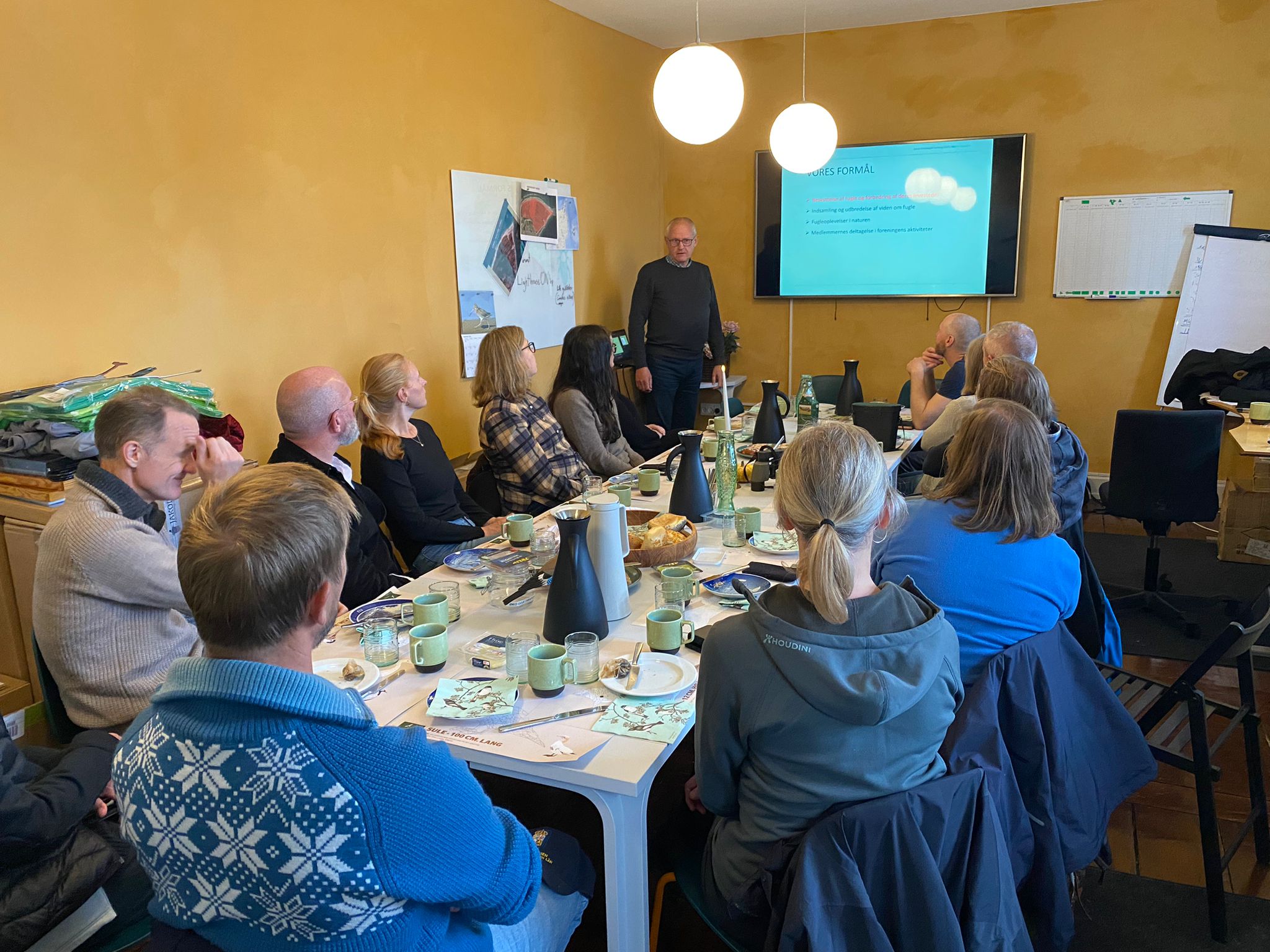
Back at the station, the people from Länsstyrelsen Västra Götaland had a meeting with a presentation by Egon Østergaard, Birdlife Danmarks Chairman.
The afternoon we waited for the rain to come and pass so we could go out again. The rain somehow never showed up so Ragnar and Rasmus were the first to leave the station to look for the wierd bunting they had earlier. Rosa, Thomas and I followed later. We all were able to find the two Crested Larks/Toplærke again, running around between the grass and dunes, but the bunting was nowhere to be found.
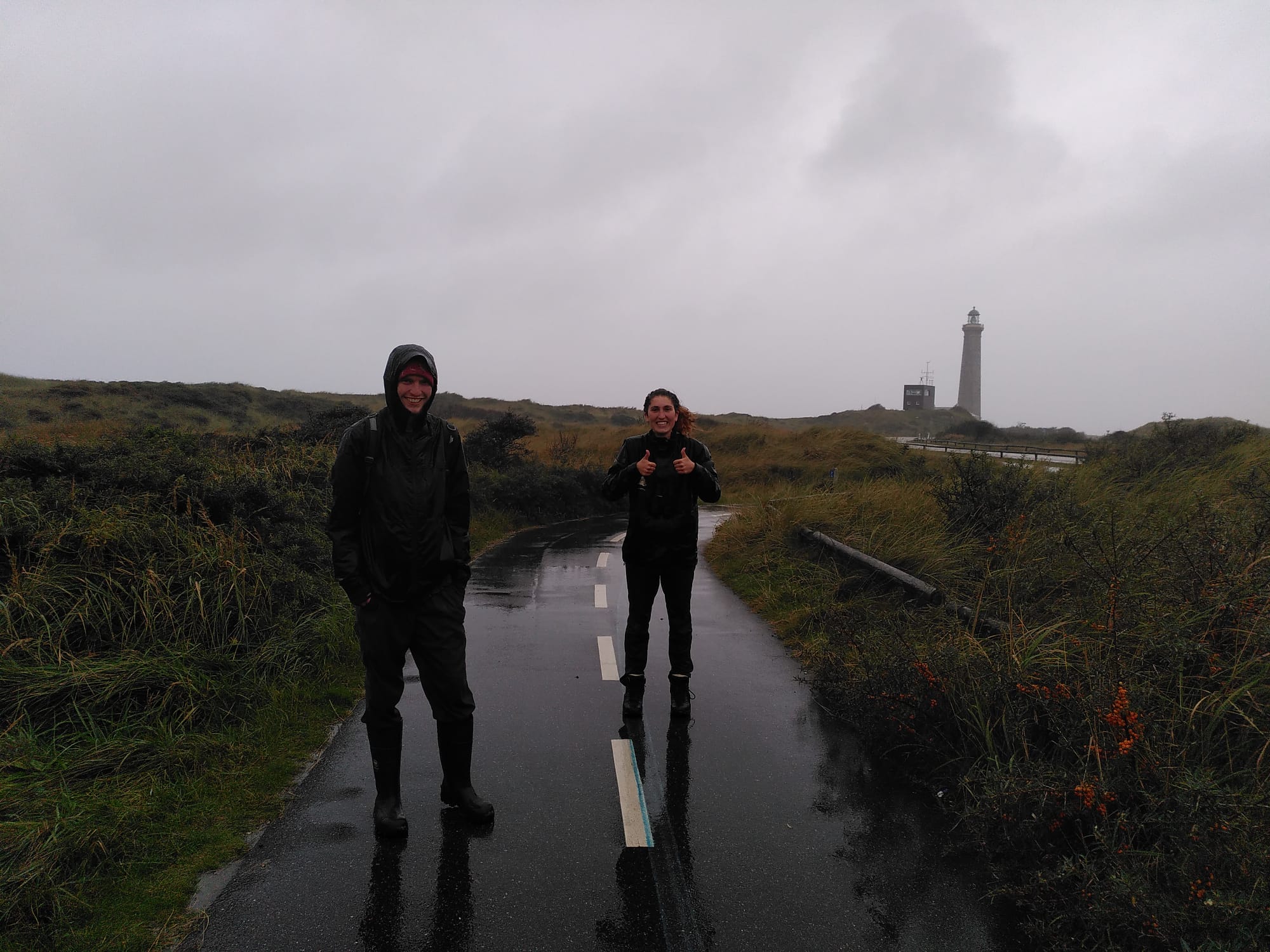
Rain finally arrived on our way back to the lighthouse
Highlights of the observation:
Arctic Skua/Almindelig Kjove
Great Egret/Sølvhejre
Black Throated Diver/Sortstrubet Lom
Caspian Gull/Kaspisk Måge
Lapland Bunting/Lapværling
Ringing (Kabeltromlen):
Gransanger - 1
Fuglekonge - 2
Blåmejse - 1
Rørspurv - 1
Munk - 1
Jernspurv - 1
Rødhals - 1
Gærdesmutte - 4
Ringing (Jennes Sø - Michael Ancher):
Gærdesmutte - 1
Munk - 1
Gransanger - 1
Fuglekonge - 2
Blåmejse - 1
Musvit - 1
Nordlig Træløber - 1
Lille Gråsisken - 2
Rørspurv - 2
Ringing (Nordstjernevej - Michael Ancher):
Musvit - 1
Total = 25
Today’s observations on Dofbasen from observers in the area
People: Thomas Weston, Ragnar Smith, Mara Glane, Rasmus Matthiesen, Carl, Simon Sigaard Christiansen, Michael Ancher, Seán Walsh
Interesting migration out to sea
Looking at the weather last night, we knew it was going to be a change to the recent days of sun and calm winds and that was very correct. The day started very dark, and it was a long time before we saw any sign of the sun, and even at the time of writing we still have not seen the sun. The wind was a breezy SE wind, and this increased throughout the morning making it difficult conditions for our surveys. There were some impressive waves and more prolonged rain in the late afternoon/evening.
Today started with Mara and Rosa setting off from the observatory just after 6am to open the nets and start ringing at Kabeltromlen before 7am. The wind and showers lead to the team closing around 10:30, having only caught 10 birds in the 3.5hrs of ringing. Their highlights were Goldcrest [Fuglekonge], a few new Blackcaps [Munk] and a Blue Tit [Blåmejse]. They decided to come back and complete some data inputting and checking of the recent ringing activities as well as lunch and chill.
Meanwhile, Ragnar, Rasmus, our week intern Carl, and I decided to walk to migration counts due to the weather. A short period of time passed before the birds started moving and this continued on and off throughout the morning with some highlights throughout. The seabirds were moving throughout with a high count of 678 Gannet [Sule], a few Kittiwakes [Ride], Guillemots [Lomvie], Black Guillemots [Tystie], and Razorbills [Alk] were all seen. There were some shorebird movements with 4 Grey Plover [Strandhjejle], an arrival of 4 Ringed Plover [Stor Præstekrave], an increase in Dunlin [Almindelig Ryle] and a slight increase in Sanderling [Sandløber] too! We had an unidentified Shearwater species [Skåpe spp] fly by, a Sandwich Tern [Splitterne] fly SW, 2 Caspian Gulls [Kaspisk Måge] with the roosting gull flocks, and a migrating Yellow legged Gull [Middelhavs-sølvmåge] SE. For Ragnar, the highlight was a Pochard [Taffeland], a rare duck for Skagen, for Rasmus and Carl the highlight was the Middelhavs-sølvmåge and for me a pair of Light-bellied Brent Geese [Knortegås ssp Hrota] that flew close SW.
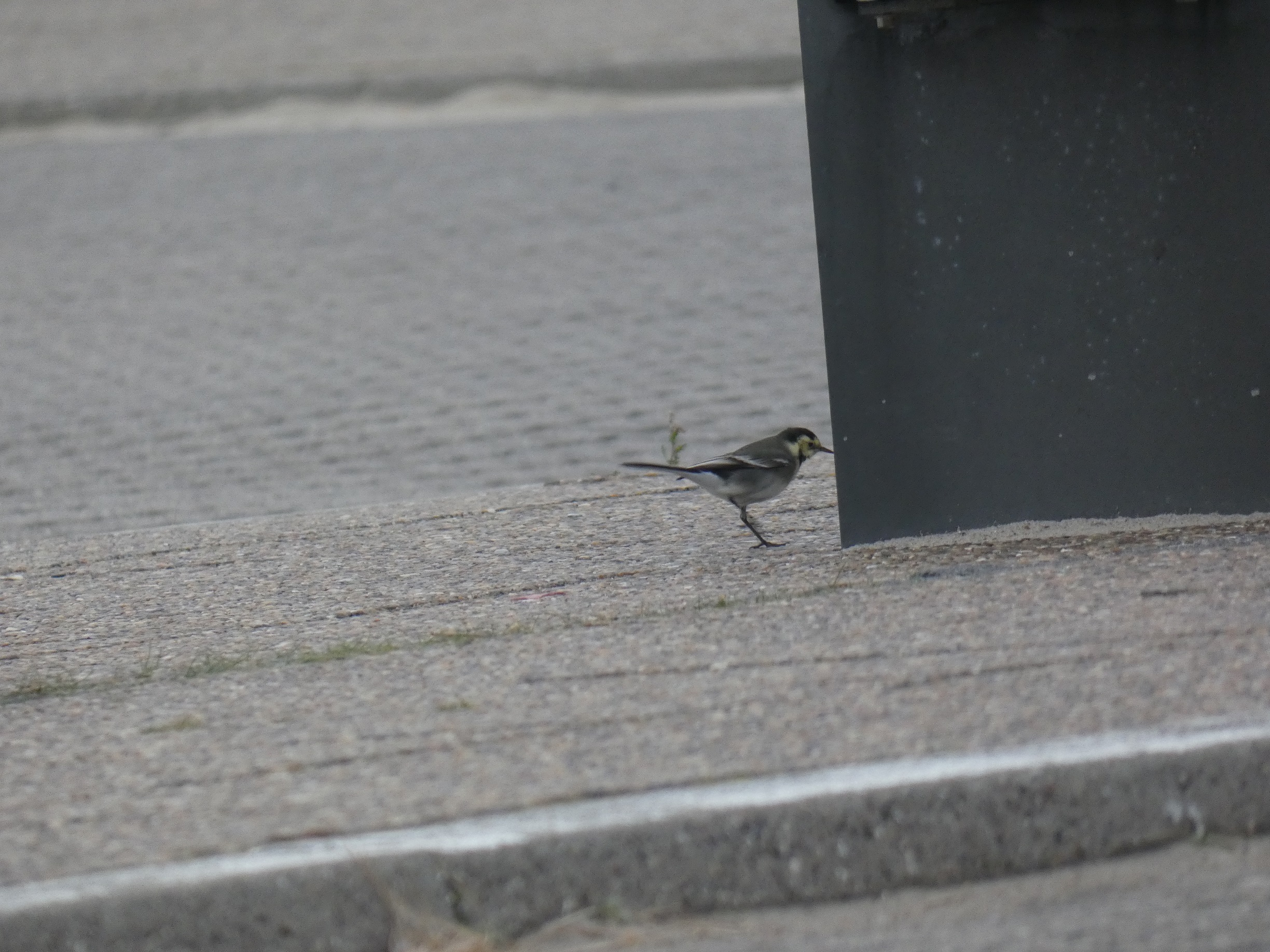
A Pied Wagtail [Hvid Vipstjert ssp. Yarrelli] in the carpark.
After the four hours, the migration team walked back to the observatory to join the ringing team. By walking through the carpark, Ragnar found a Pied Wagtail [Hvid Vipstjert ssp. Yarrelli] feeding between the cars. The bird was not associated with the local White Wagtails [Hvid Vipstjert ssp. Alba] and was the first in Denmark this Autumn. Back at the observatory, a quick lunch before Simon arrived, and evening meeting was undertaken early. The team completed their relevant ‘office’ tasks and had a more relaxed afternoon ready for nightcatching later.
Highlights from the observatory:
- A Pochard [Taffeland] flew NW
- Yellow-legged Gull [Middelhavs-sølvmåge] – 4th individual recorded this year
- A Pied Wagtail [Hvid Vipstjert ssp. Yarrrelli] in the carpark – 1st of the Autumn.
Ringing totals
Ringing (Kabeltromlen)
|
Goldcrest |
Fuglekonge |
1 |
|
Wren |
Gærdesmutte |
1 |
|
Blue tit |
Blåmejse |
1 |
|
Chiffchaff |
Gransanger |
3 |
|
Blackcap |
Munk |
4 |
Total: 10
Ringing (Jennes Sø)
|
Goldcrest |
Fuglekonge |
1 |
|
Treecreeper |
Gærdesmutte |
1 |
|
Robin |
Rødhals |
1 |
|
Chiffchaff |
Gransanger |
1 |
|
Lesser Redpoll |
Gråsisken, Lille (ssp. cabaret) |
1 |
Total: 5
Today’s observations on Dofbasen from observers in the area
People: Michael Ancher, Thomas Weston, Ragnar Smith, Mara Glan, Rasmus Matthiesen, Carl, Simon Sigaard Christiansen.
Rasmus' "Best Day Yet"
Hello!
We’ll start today’s blog with last night – where Thomas, Rasmus, and I went night catching. Walking a loop of Grenen in an unsuccessful search for the Shore Larks (Bjerglærke), we caught two Dunlin (Almindelig Ryle). Thomas and Rasmus returned to the station to ring the birds, while I continued, bringing them another Dunlin and Jack Snipe (Enkeltbekkasin) 20 minutes later.
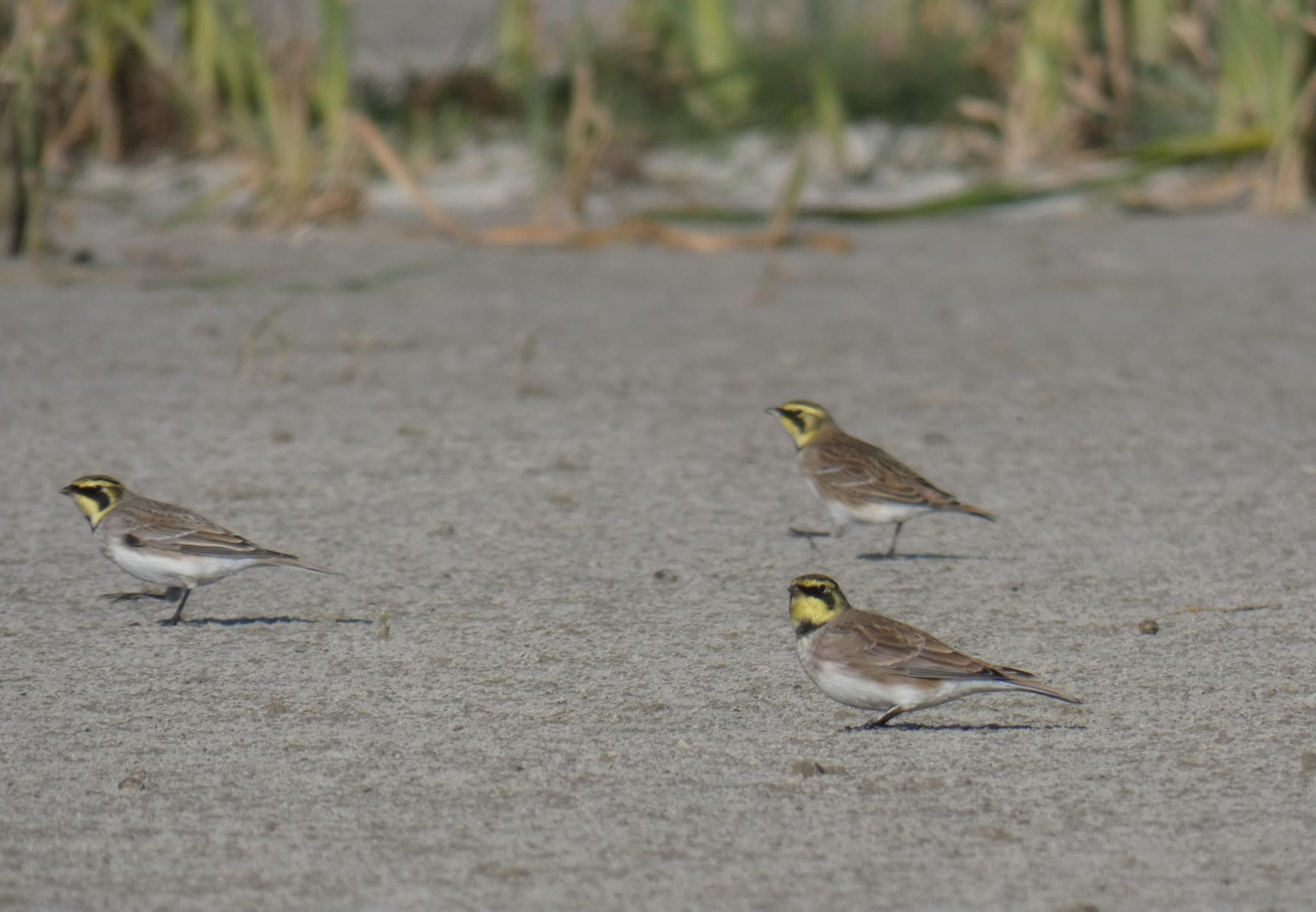
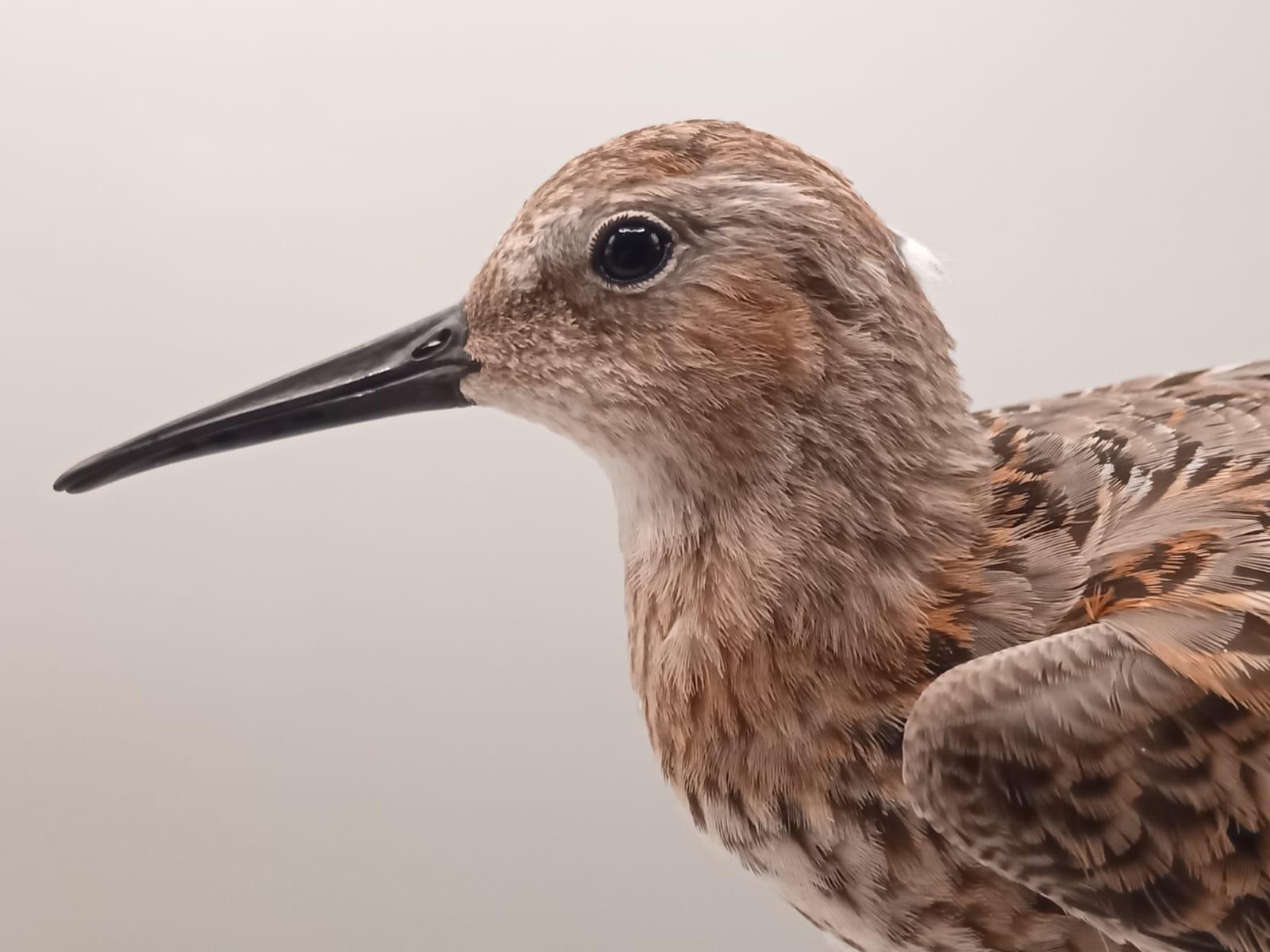
The night catching aim (Bjerglærke), although Dunlin (Almindelig Ryle) are always nice too!
In the morning, the team split between Kabeltromlen and Worlds End Three as per usual. At Kabeltromlen there were plenty of birds overhead, some birds in the bushes, a few birds in the nets, and even fewer birds in the database, as many we caught were the same birds from recaptured from today. We ended the day with 23 new birds, including a late Reed Warbler (Rørsanger). On the return, a quick scope of Jenes Sø rewarded us with a sight of 10 soaring Buzzards (Musvåge), including ~ 2 Rough Legged Buzzards (Fjeldvåge).
Meanwhile, the observation team had Rasmus’ “best day so far”, starting with a Kingfisher (Isfugl), followed by a Great Northern Diver (Isløm), 2 Peregrine Falcons (Vandrefalk), and the same Rough Legged Buzzards (Fjeldvåge). The team then headed to the harbor and town, where they saw 5 Purple Sandpipers (Sortgrå Ryle) and a few Kittwake (Ride), the diversity of groceries in Lidl, and total darkness while they closed their eyes for a quick snooze in the park.
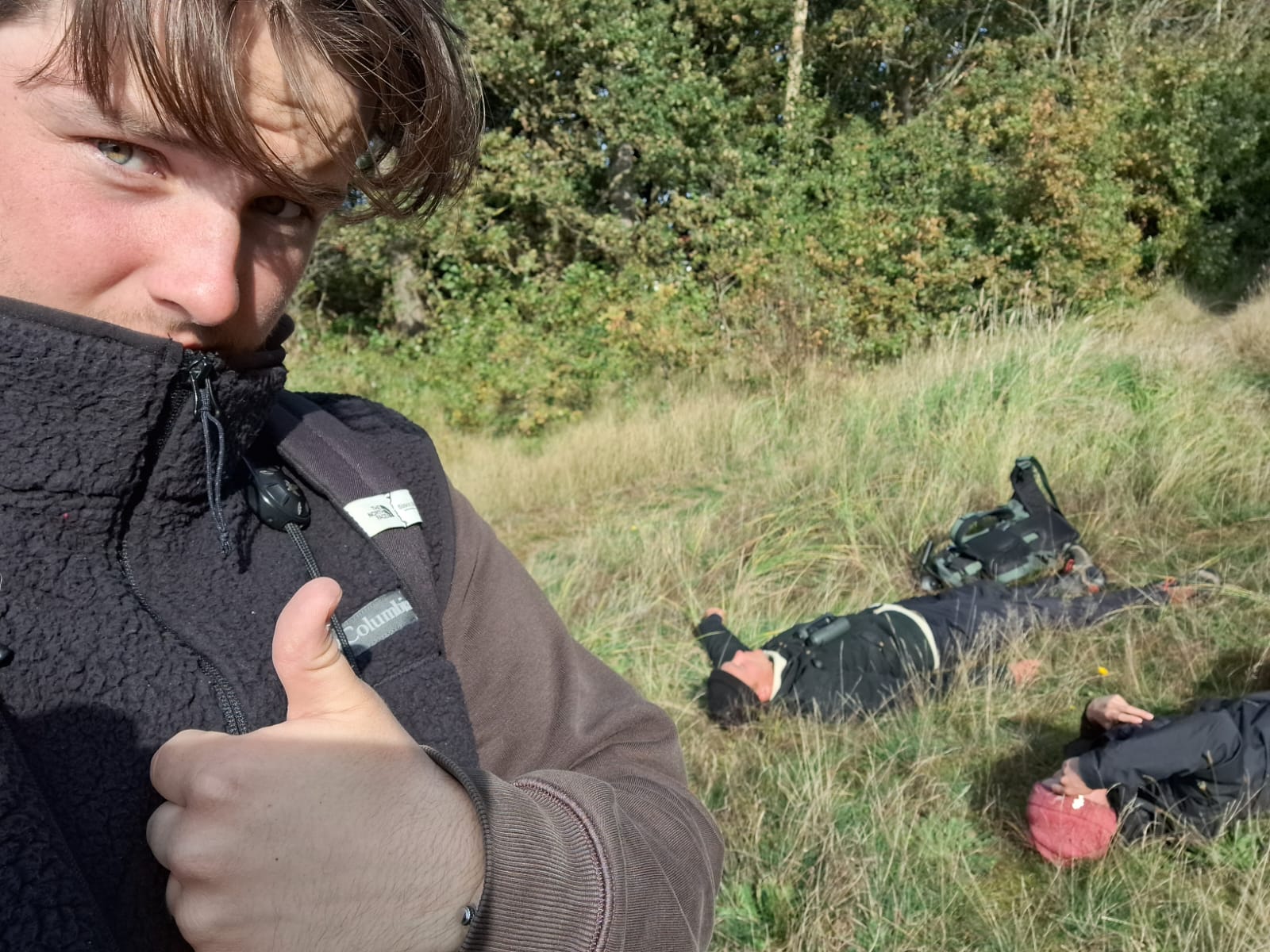
Thumbs up if you're having the best week of your life at Skagen Fuglestation!
After lunch, we went on a few walks, spotting 3 more Purple Sandpiper (Sortgrå Ryle) at Højen Fyr and an adult male Hen Harrier (Blå Kærhøg) at Nedermose. We then planned the coming week and briefly said hi to Carl, a young birder from Sweden, who will be joining us in the field for a few days.
Highlights from the observations:
- 1 Great Northern Diver (Isløm)
- 2 Peregrine Falcons (Vandrefalk)
- 2 Rough Legged Buzzards (Fjeldvåge)
Ringing (Kabeltromlen)
Gærdesmutte – 6
Rødhals – 2
Rørsanger – 1
Munk – 1
Blåmejse – 2
Gransanger – 6
Fuglekonge – 5
Total = 23
Ringing (Jenes Sø, Michael Ancher)
Gærdesmutte – 1
Rødhals – 1
Gransanger – 2
Fuglekonge – 1
Blåmejse – 3
Musvit – 1
Gråsisken – 12
Total = 21
Today’s observations on Dofbasen from observers in the area
People at the station: Ragnar Smith, Mara Glane, Thomas Weston, Rosa Hicks, Rasmus Matthiesen, Simon Sigaard Christiansen, John Stenum, Iben Jørgensen, Michael Ancher, Carl
European Bird Watch Day
Hej!
As today was the European Bird Watch Day, we started highly motivated to see and count some birds. This day came with the challenge to count all the birds we see. The ringing team, consisting of Rosa and me, quickly realised while opening the nets that the bushes where a little quit. Not many birds to be heard. And we had the same result with the ringing. A total of 29 birds were ringed today at Kabeltromlem. But in perfect timing for when Ragnar came by with the people he was giving a guided bird tour for, we had 7 Reed Buntings/Rørspurv in one round.
Ragnar then continued the bird watching walk with the paticipants of the tour and they saw the Shore Larks/Bjerglærke, a Merlin/Dværgfalk and a Rough-legged Buzzard/Fjeldvåge flying over Kabeltromlen. Pink-footed Geese/Kortnæbbet Gås were also a highlight on the tour.

Watching birds at World's End 3 on the guided tour by Ragnar
Thomas and Rasmus at the observation, busy with counting all the gulls, also saw the geese and some Shore Larks/Bjerlærke again. Otherwise they hadd not many birds, but a still a great time.
In the afternoon we did some much needed cleaning and a trip to the grocery shop to return the pand of the last 3 weeks. The day ended with some admin, chat about birds and a nice lasagna by Rosa. Overall the we have seen 74 bird species today.
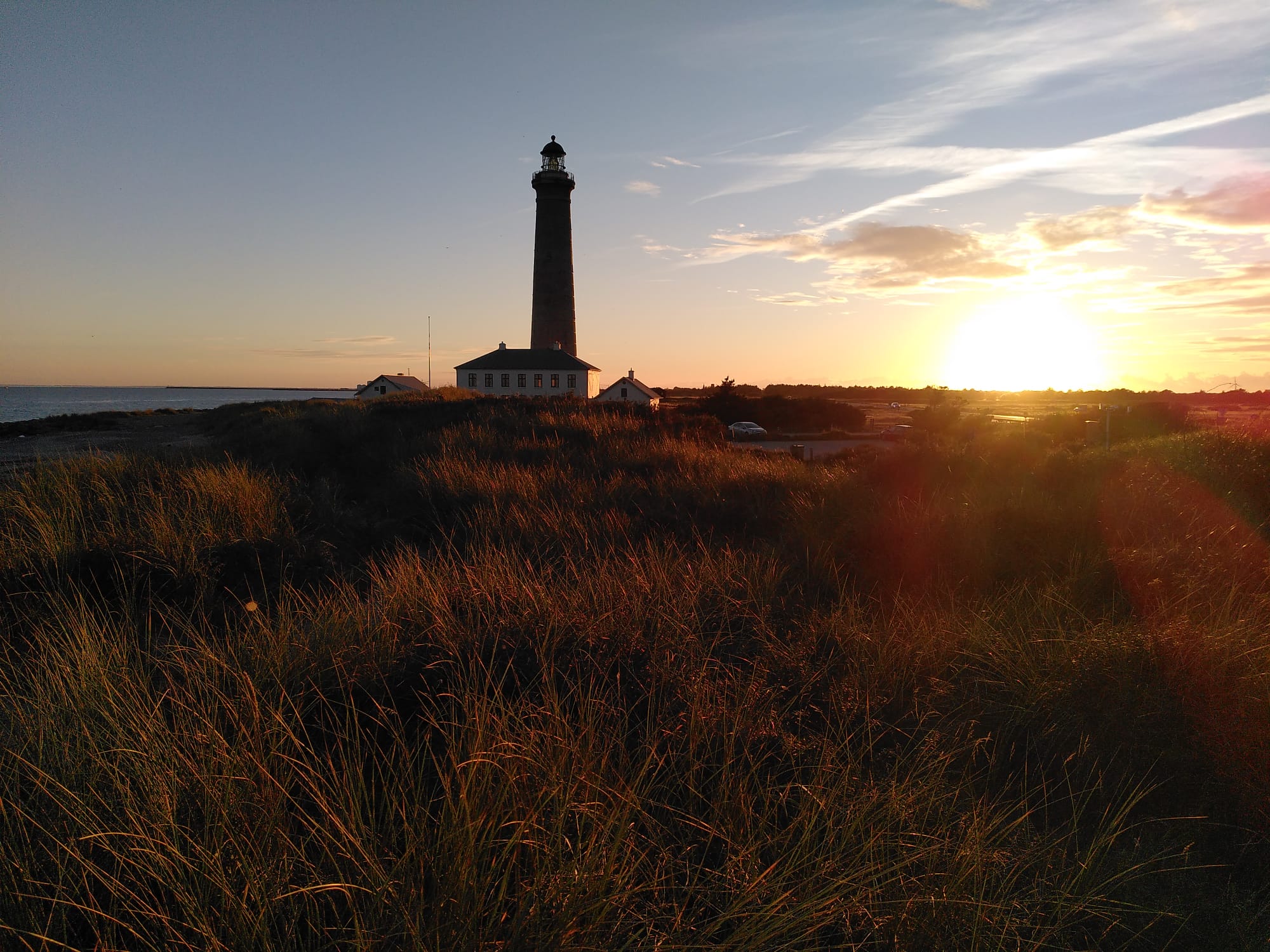
Sunset on my evening walk
Highlight of the observations:
Pink-footed Goose/Kortnæbbet Gås - 88
Shore Larks/Bjerlærke - 6
Rough-legged Buzzard/Fjeldvåge
Crested Lark/Toplærke
Caspian Gull/Kaspisk Måge
Ringing (Kabeltromlen):
Gærdesmutte - 2
Rødhals - 1
Rørsanger - 1
Munk - 3
Lille Dompap - 3
Rørspurv - 7
Blåmejse - 1
Gransanger - 9
Fuglekonge - 2
Ringing (Jennes Sø - Michael Ancher):
Gærdesmutte - 1
Rødhals - 2
Gransanger - 2
Fuglekonge - 3
Blåmejse - 2
Lille Gråsisken - 17
Ringing (Nordstjernevej - Michael Ancher):
Munk - 1
Kvækerfinke - 1
Total = 58
Today’s observations on Dofbasen from observers in the area
People at the station: Ragnar Smith, Mara Glane, Thomas Weston, Rosa Hicks, Rasmus Matthiesen, Simon Sigaard Christiansen, John Stenum, Iben Jørgensen, Michael Ancher
Alt for godt vejr
Den er god nok, jeg er tilbage på stationen! dog kun for den næste uges tid:( Jeg ankom onsdag aften og skal hjælpe til med de daglige pligter indtil torsdag den 10 oktober.
I morges tog jeg med Ragnar på morgenobs ved verdens ende 3. Der var ikke just mange fugle, men en flok bjerglærker, en fjeldvåge og strandhjeile varmede en lille smule. Der var okay gang i de rødstrubede lommer i morges, og derfor faldte tankerne og snakken på at vi begge to gerne ville se en hvidnæbbet lom tæt på kysten. Men den kom desværre aldrig:( På et tidspunkt havde vi ca. 230 suler der rastede og fouragerede ved Grenen på samme tid. I løbet af natten havde vi i Skagen 0 meter i sekundet, hvilket betød at de fleste rastende fugle fra i går, var trukket væk, og det klare vejr havde ikke skabt så meget fald blandt småfuglene, som man kunne drømme om en oktoberdag. Mange af de gransangere og fuglekonger Ragnar og jeg havde på vores lusketur rundt omkring i Skagen i går var også trukket væk kunne jeg konkludere på min cykeltur rundt i området omkring fyret, Batterivej, Guldmajssøen Skagen odde naturcenter og batteriskoven. Min mission var at finde en hvidbrynet løvsanger og få købt et pølsehorn, som jeg havde haft lyst til hele dagen. Jeg lykkedes dog kun med 50% af missionen. med et pølsehorn i hånden cyklede jeg hjem til stationen.
I ringmærkningen havde Mara, Thomas og Simon heller ikke lige så mange fugle i nettene som i går. I dag fik 28 nye fugle en ring på. En af de lidt sjovere arter i nettene var denne vandrikse! Mega fed fugl! Under sidste netrunde fik Mara og Thomas syet et par af de net der var kommet et par små huller i.
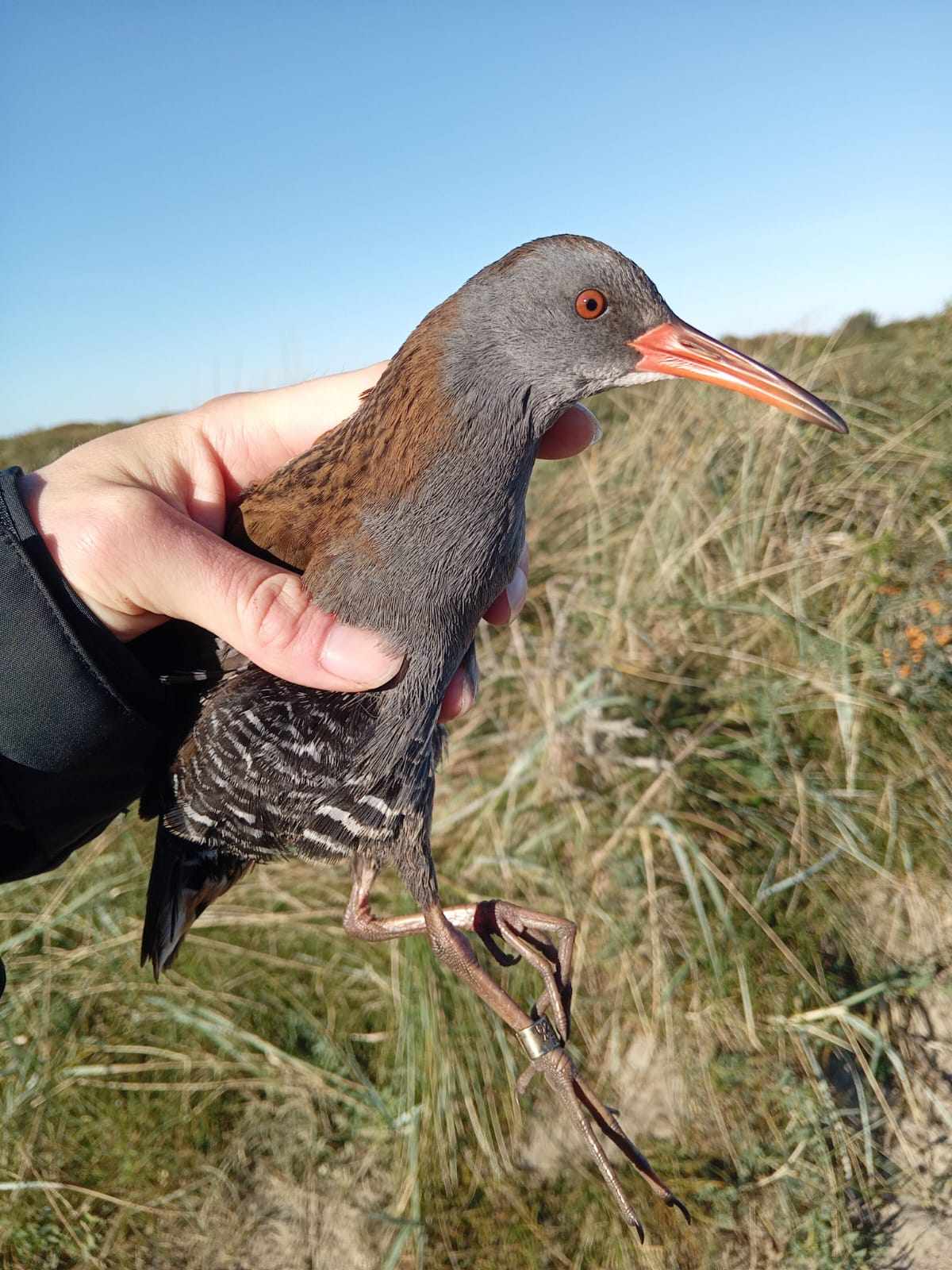 Vandrikse
Vandrikse
Kabeltromlen blev også forsøgt fikset i dag. Nu står den i hvertfald mere stabilt! Simon, Mara, Thomas og Ragnar kørte ud til kabeltromlen med en palle som skulle gøre den mere stabil.
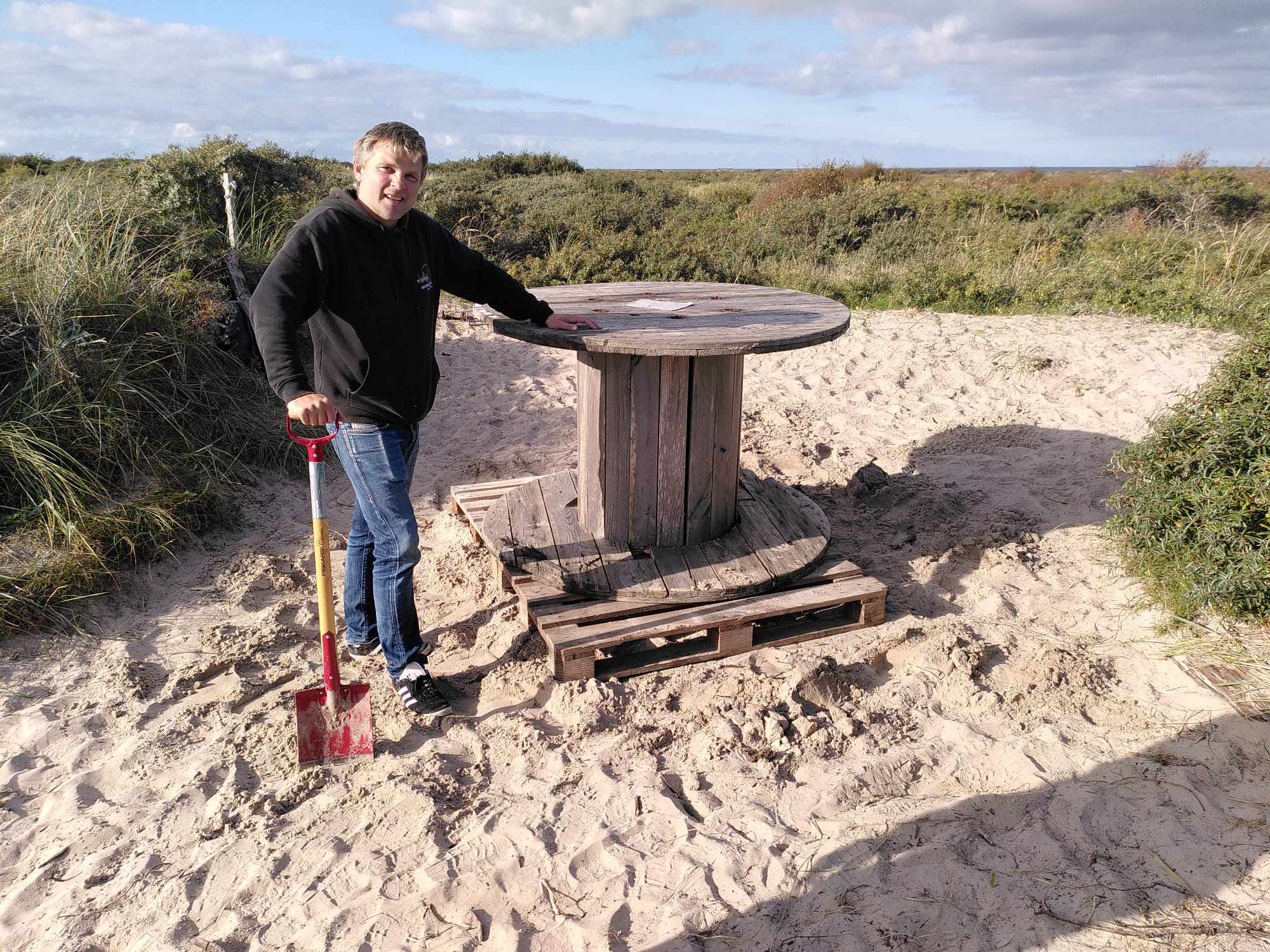 Kabeltromlen blev hævet op på et par paller
Kabeltromlen blev hævet op på et par paller
Hertil aften har vi lavet forskellige fuglestations-opgaver, Ragnar sidder og arbejder på ting fra sin skole og planlægger den guidede tur han har i morgen i forbindelse med EuropeanBirdWatch day. Derudover har vi lavet, indtastning af ringmærkningsdata, indtastning i Dofbasen, indrapportering af farveringmærkede måger og redigeret en video fra natkikkerten fra nattens fangst på Grenen.
“Hov vent, hvad mener han med nattens fangst?”
I nat fangede Thomas, Mara og jeg nemlig en enkeltbekkasin på Grenen. Vi havde i alt 7 enkeltbekkasiner og 24 dobbeltbekkasiner da vi gik på Grenen. Jeg glemte gummistøvler, så jeg fik usandsynligt våde fødder, men det var det hele værd, for nøj det var en fed fugl at se i hånden!
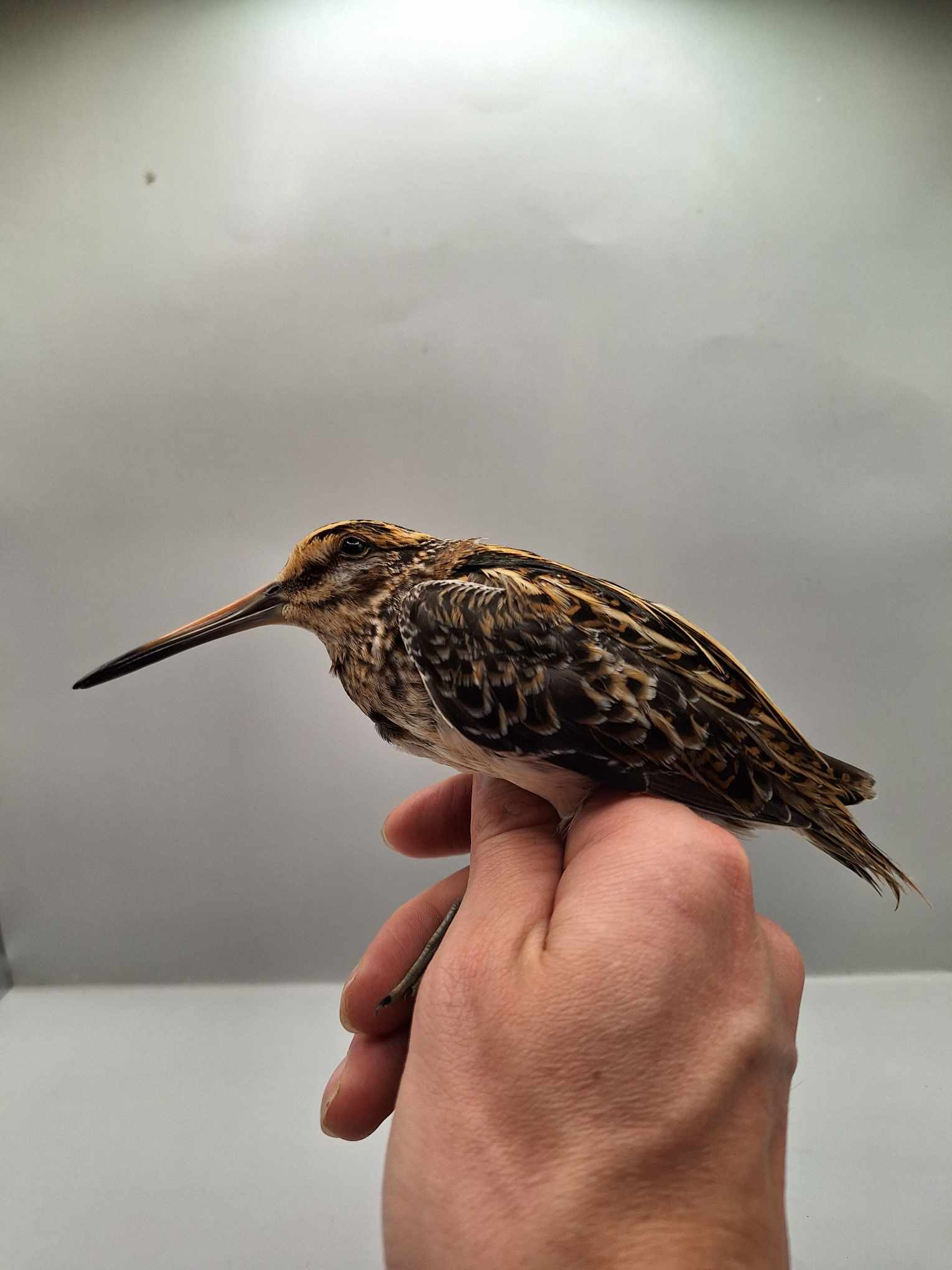 Enkeltbekkasin
Enkeltbekkasin
I foråret havde Skagen Fuglestation 4 optagere aktive ude i området om natten. Simon Gillings, som PT sidder og lytter nogle af natoptagelserne igennem, har sendt en lidt sjov observation af en Plettet Rørvagtel den 12 maj. Som vist på billedet har den været på en lille rundtur i området fra Skarvsøen og tilbage igen. Du kan høre et par af dens flugtkald i Dofbasen.
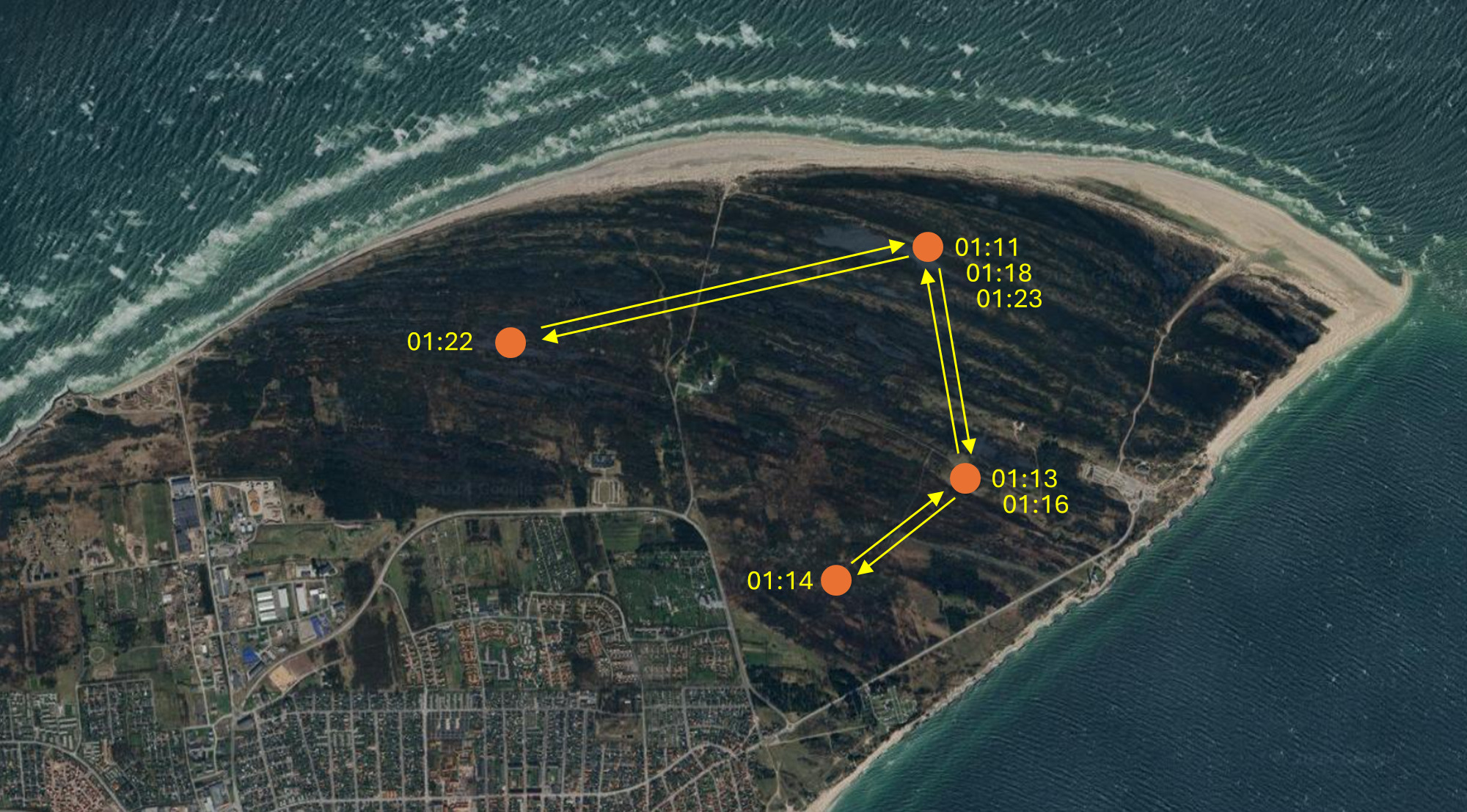
Nu begynder duften af lækker mad så småt at brede sig på stationen, og jeg vil derfor runde bloggen af
Tak fordi I har læst med til nu:)
Vi ses derude!
Højdepunkter fra observationerne:
Fjeldvåge 1k
Ringmærkede fugle:
(Opdateres)
Jennes sø:
Træløber 1
Lille Gråsisken 38
Today’s observations on Dofbasen from observers in the area
People: Thomas Weston, Ragnar Smith, Mara Glan, Rasmus Matthiesen, Simon Sigaard Christiansen, John Stenum, Iben Jørgensen, Egon Østergaard, Jens Eriksen & Reginald Victor.
Goldcrest, Chiffchaffs and Dolphins
Hello, I’m back again for another Autumn season at Skagen. It is really nice to be back, and I am looking forward to the coming couple of months and the migration that entails.
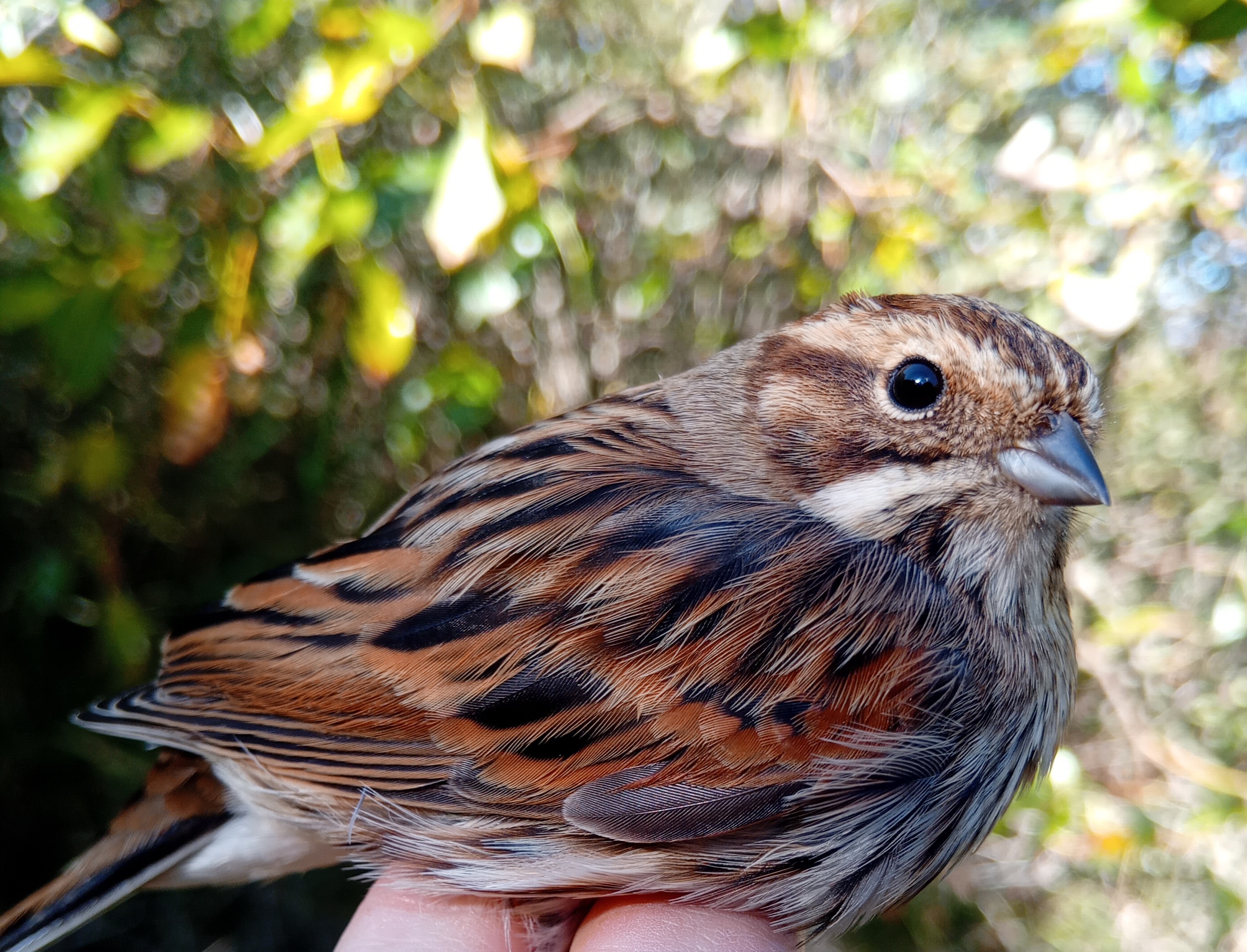
Figure 1: A Reed Bunting [Rørspurv] from this morning. Photo by Thomas Weston
Today started with Mara and me setting off from the observatory just after 6am to open the nets and start ringing at Kabeltromlen before 7am. It was a calm, clear night last night with a slight breeze from the North/North West. Song thrushes [Sangdrossel] were migrating overhead throughout the darkness and the sound of birds filled the bushes around Kabeltromlen. It was looking like it could be quite a busy day. The morning was sunny and calm, and it led to some nice visible migration overhead, as well as migration in the nets too. The rounds were steady, with 10-15 birds being extracted for the first few hours, and there were no quiet rounds at all up until 1pm when we finished. The highlights, to begin, included small flocks of Goldcrest [Fuglekonge] moving through the bushes, mixed finch flocks overhead and Water rails [Vandrikse] seemingly everywhere calling. We had a Peregrine falcon [Vandrefalk] fly along the dunes, small flocks of Greylag Geese [Grågås] and 2 Lapwing [Vibe] of note too. A late Reed warbler [Rørsanger] was an unexpected treat. It was great to be in the company of other birders and Simon SC who joined the team for most of the morning. The ringing was consistent, and we ended on just over 50 birds, the highest catch of the autumn season so far (this will be beaten soon so keep an eye on the blog for more sessions). The last bird ringed was in fact a first of the year and was a Woodpigeon [Ringdue]. This species usually avoids the nets and when caught they generally fly out just as easily. Either way, it was nice to see in the hand and flew off towards the lighthouse after release.
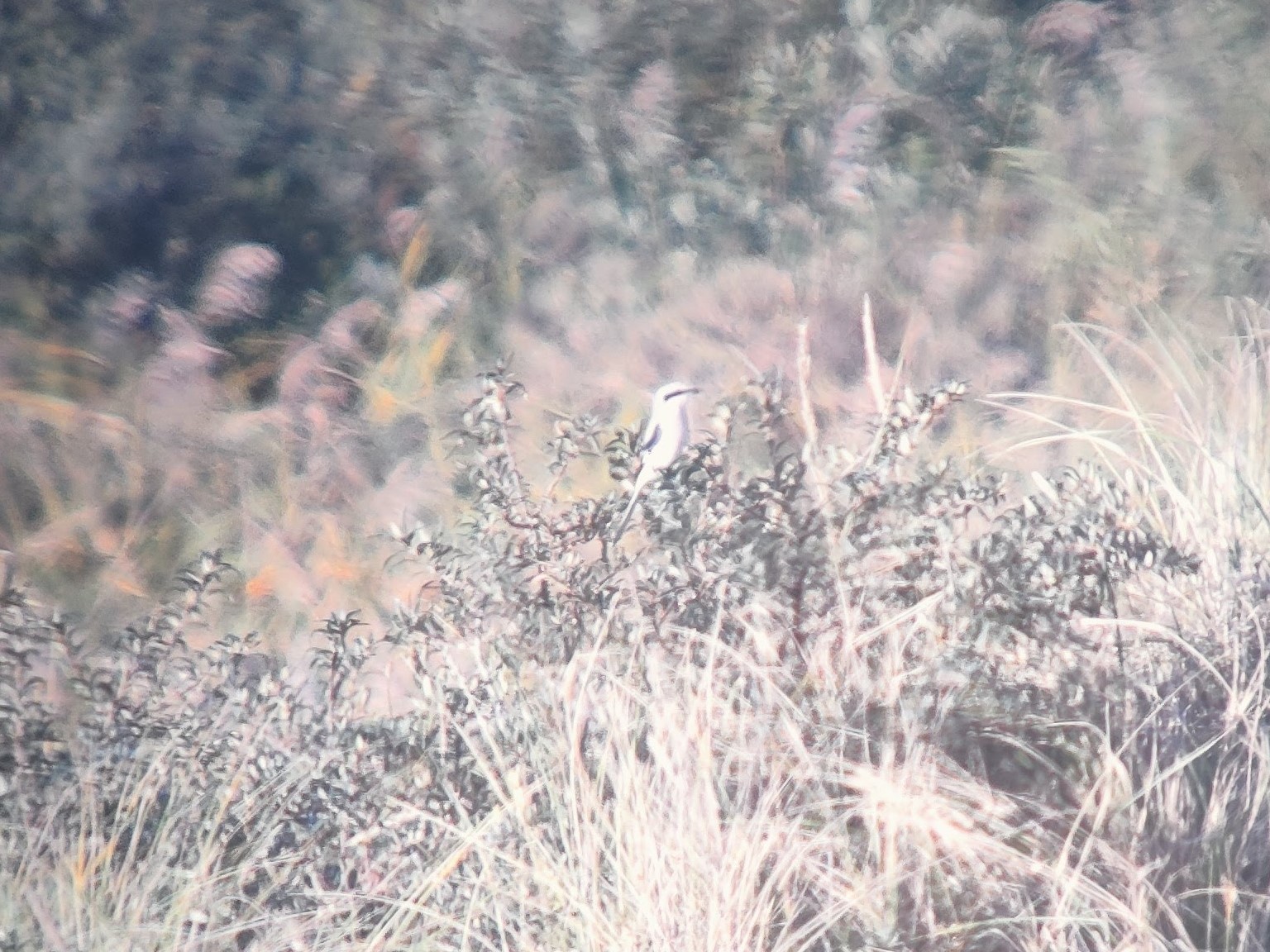
Figure 2: Great Grey Shrike [Stor Tornskade] in the bushes from Worlds End 3. Photograph taken by Ragnar Smith.
Meanwhile, Ragnar and Rasmus went to migration counts. The first hour was apparently quite busy with a few passage seabirds, passerine migration, a Great Grey Shrike [Stor Tornskade] in the bushes and 2 Bottlenose Dolpins [øresvin] passed the observers. However, the counts became quieter as the morning went on and the overall highlights included a possible Great-northern Diver [islom], up to 8 Shorelarks [Bjerglærke] on the beach, the first 2 Jack Snipe [Enkeltbekkasin] of the autumn, and a wander further west saw the 2 Crested Larks [Toplærke] that have apparently been around for almost three months now.
After lunch, Rasmus and Ragnar went towards Jennes Sø, before heading further west in search of birds. They found some Stonechats [Sortsrubet Bynkefugl], lots more Goldcrest [Fuglekonge] and quite a few Chiffchaff [Gransanger] too. Meanwhile, I went for a walk along the beach and saw a flock of Gannets [Sule] feeding offshore and one of the first returning Rock Pipits [Skæpiper] to the area. Mara went to Elle Krattet but did not find many birds apart from Goldcrests [Fuglekonge]. How many are there in the area today?
Even meeting was called at 4pm today and the team completed laptop work thereafter. Mara and I entered ringing data, Rasmus cooked us dinner and Ragnar completed some DofBasen Quality Assurance and sorted some colour ring records from the area. The team will be out nightcatching later so keep an eye on the blog tomorrow for all the birds caught.
In other news, the Brown Booby [Brun Sule] seen at Skagen has recently been seen in Falsterbo and afterwards a quick trip into the Baltic before it recently came to Sjælland. You can see a close up picture taken by Sakari Kaupinnen yesterday in Dofbsen. If it continues its way West, maybe we will see it again at Skagen this autumn. Who knows?
Highlights from the observatory:
- A Woodpigeon [Ringdue] ringed at Kabeltromlen – the first of the year caught and ringed
- First 2 Jack Snipe [Enkeltbekkasin] passing through.
- The 2 Crested Lark [Toplærke] remain.
- Highest count of 8 Shorelark [Bjerglærke] for the autumn.
Ringing totals
Ringing (Kabeltromlen)
|
Goldcrest |
Fuglekonge |
14 |
|
Robin |
Rødhals |
11 |
|
Wren |
Gærdesmutte |
9 |
|
Blue tit |
Blåmejse |
2 |
|
Chiffchaff |
Gransanger |
2 |
|
Reed Warbler |
Rørsanger |
1 |
|
Dunnock |
Jernspurv |
1 |
|
Bullfinch (little) |
Dompap (lille) |
1 |
|
Bullfinch |
Dompap |
1 |
|
Brambling |
Kvækerfinke |
1 |
|
Reed Bunting |
Rørspurv |
3 |
|
Blackcap |
Munk |
1 |
|
Great Tit |
Musvit |
4 |
|
Song thrush |
Sangdrossel |
2 |
|
Woodpigeon |
Ringdue |
1 |
Total: 46
Today’s observations on Dofbasen from observers in the area
People: Thomas Weston, Ragnar Smith, Mara Glan, Rasmus Matthiesen, Simon Sigaard Christiansen, John Stenum, Iben Jørgensen, Egon Østergaard, Jens Eriksen & Reginald Victor.
